SMALL DOG BREEDS
Maltese: A Beloved Companion
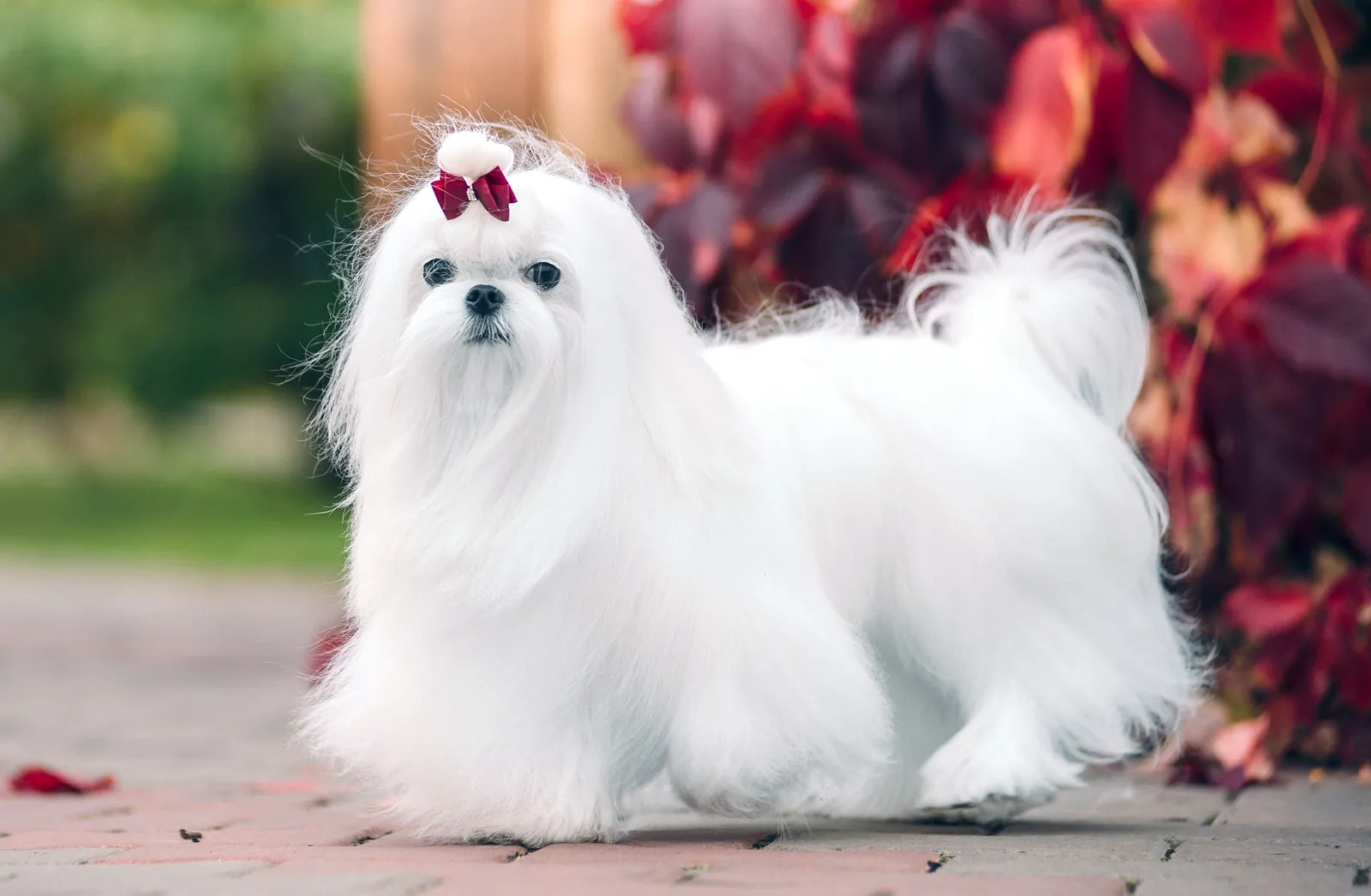
Introduction
The Maltese is a small yet spirited dog breed, cherished for its charming demeanor and flowing white coat. Known for their affectionate nature and playful personality, these dogs have been long-time favorites of pet owners around the globe. Whether you’re considering bringing a Maltese into your home or simply want to understand what makes this breed so special, this comprehensive guide explores everything you need to know.
For more information regarding 4 seasonal cxcercieses of all dog breeds recommended by the doctors and experts,you can visit our youtube channel:
https://www.youtube.com/@Dogsreaders
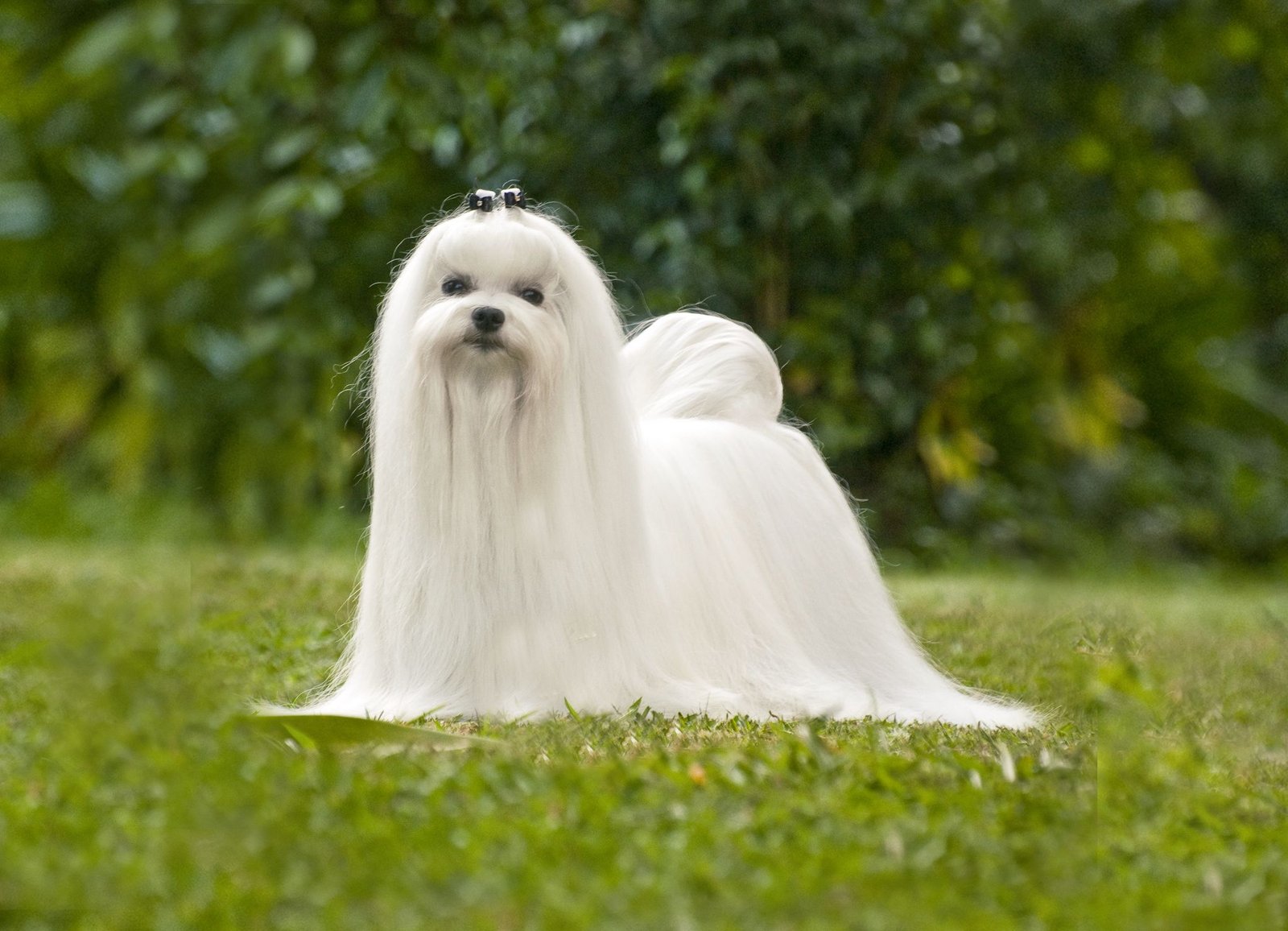
A Brief History of the Maltese
The Maltese breed has an ancient history, believed to date back over 2,500 years. Originating from the Mediterranean region—most likely the island of Malta—these tiny dogs were cherished by royalty and aristocrats in ancient civilizations such as Greece, Egypt, and Rome. They were often depicted in art and literature as symbols of luxury and companionship.
The breed’s resilience over the centuries is a testament to its adaptability and enduring charm. Today, the Maltese remains a popular companion dog, celebrated for its loving personality and elegant appearance.
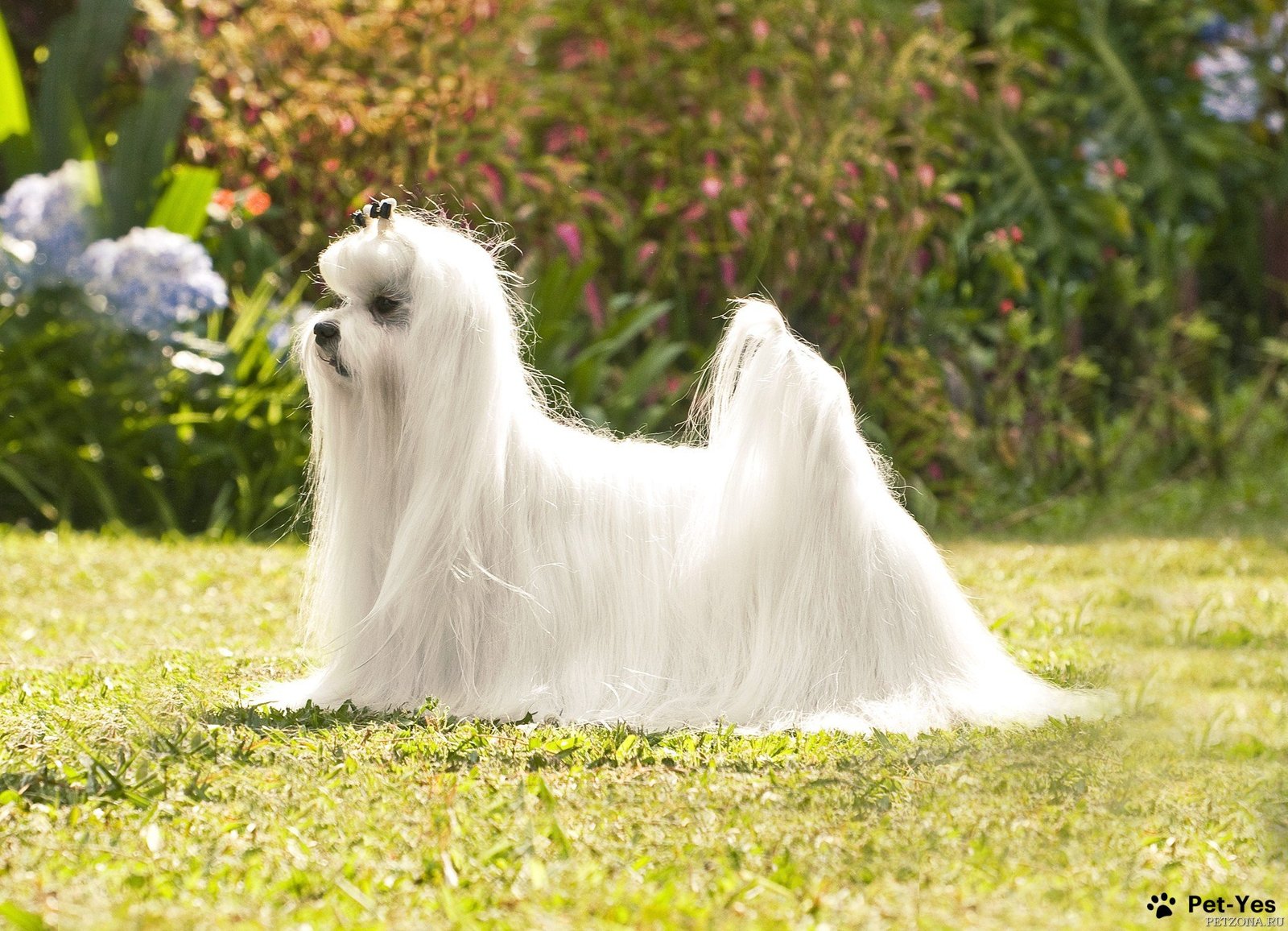
Maltese Common Diseases and Latest Research
The Maltese breed, while generally healthy, is prone to several hereditary and non-hereditary diseases. Understanding these common ailments and the latest research on treatment and prevention can help Maltese owners take proactive measures to ensure their pets’ well-being.
1. Progressive Retinal Atrophy (PRA)
Progressive Retinal Atrophy is a genetic disease that leads to vision loss in Maltese dogs. Recent advances in genetic testing are making it possible to identify carriers of this condition early, helping breeders select against it. Explore the developments in genetic testing for PRA here.
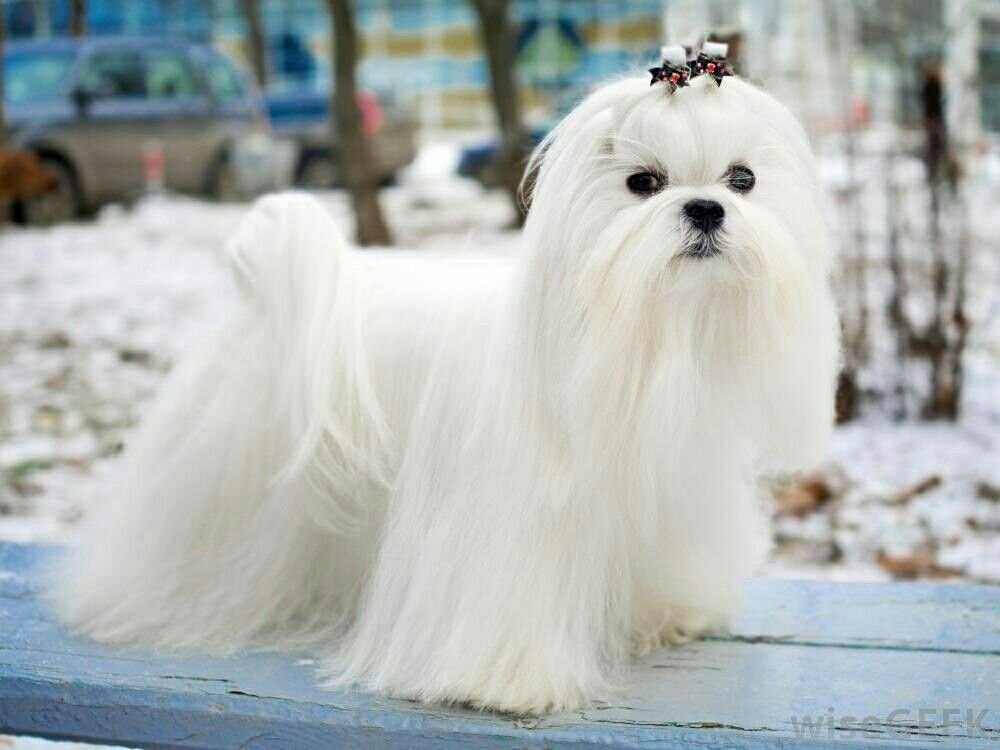
2. White Shaker Syndrome
This neurological condition primarily affects small breeds and causes tremors. Research has shown that immunosuppressive therapy, such as corticosteroids, can effectively manage symptoms. Read about the effective treatments for White Shaker Syndrome here.
3. Mitral Valve Disease
Mitral Valve Disease is a heart condition common in older Maltese dogs. Advances in veterinary cardiology contribute to early detection and improved management strategies, such as medications and dietary adjustments. Access the full study on Mitral Valve Disease management from this source.
4. Dental Disease
Maltese dogs are prone to dental issues, including periodontal disease. Current research emphasizes the importance of regular dental care, including professional cleanings and daily brushing, to prevent serious health problems. Learn more about dental disease prevention in Maltese dogs.
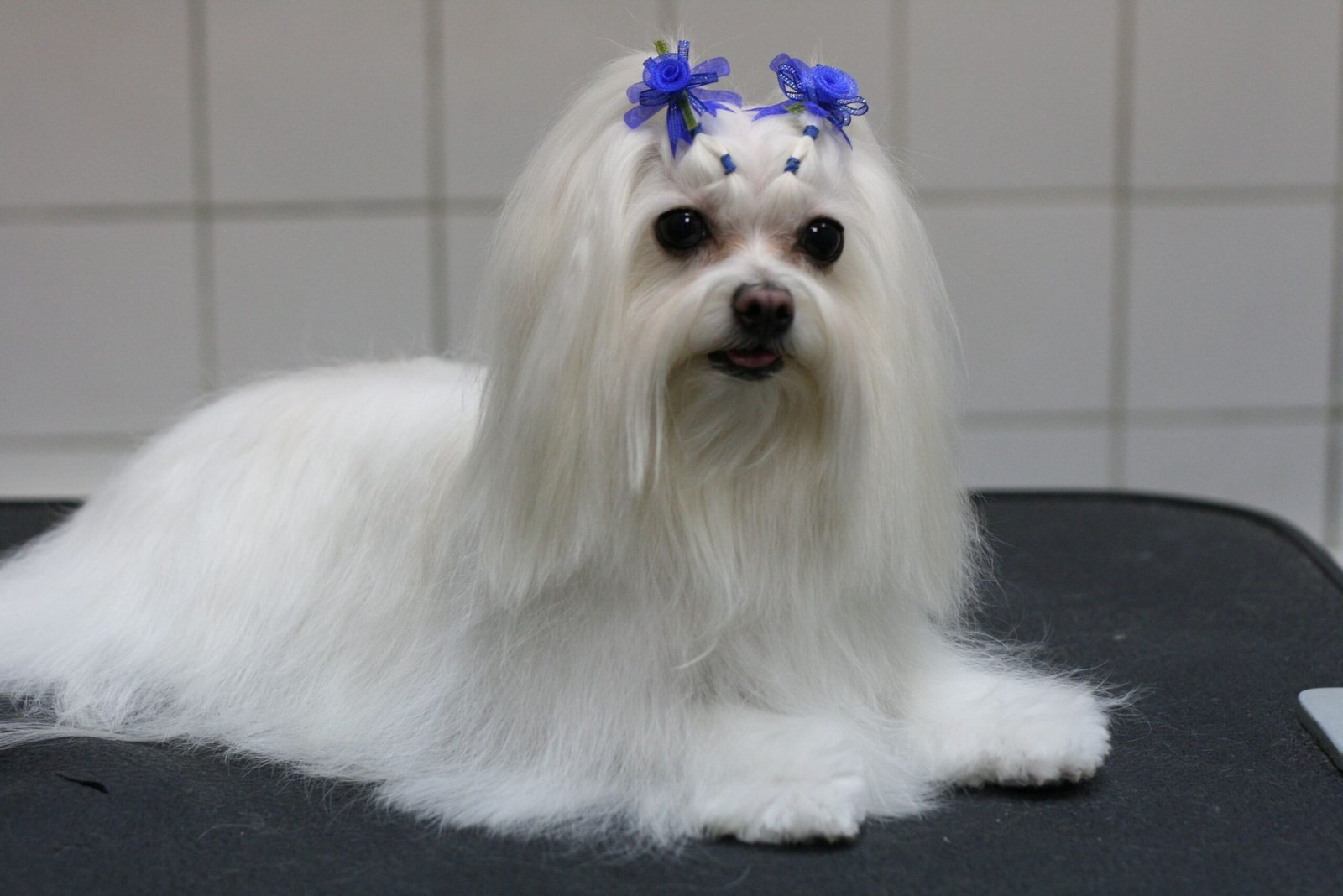
Stay informed about these common diseases, and leveraging the latest research allows Maltese owners to enhance their dogs’ quality of life through proactive health management and effective treatments.
Physical Characteristics of the Maltese
- The Maltese is a toy breed, small in size but big in personality. Here are some key physical traits:
- Size: The Maltese typically weigh between 4-7 pounds and stand 7-9 inches tall at the shoulder.
- Coat: They are best known for their long, silky white coat, which requires regular grooming to maintain its luster.
- Eyes and Nose: They have expressive dark eyes and a black nose, giving them an adorable, soft appearance.
- Build: Despite their delicate look, Maltese dogs are surprisingly sturdy for their small size.
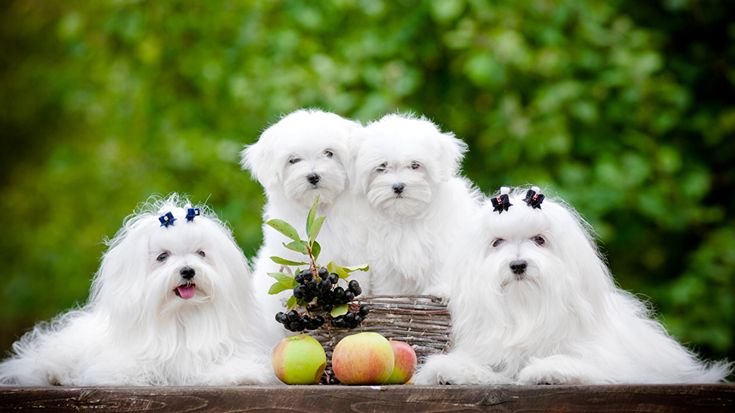
The Maltese Personality
What truly sets the Maltese apart is their personality. They are highly affectionate and crave human companionship. These dogs are happiest when they are by your side, and thrive in a family setting where they are showered with attention.
Key Personality Traits:
- Loving and Loyal: The Maltese forms strong bonds with its owners, often becoming a devoted and loving companion.
- Playful and Energetic: Despite their small size, they are full of energy and enjoy activities like fetch or short walks.
- Smart and Trainable: The Maltese is an intelligent breed that responds well to positive reinforcement training. Their eagerness to please makes them quick learners.
Caring for a Maltese
Owning a Maltese involves specific care to ensure their health and happiness. From grooming to exercise needs, here’s what to expect:
1. Grooming
The Maltese’s signature white coat requires consistent grooming. Daily brushing prevents tangles and matting, while regular baths help maintain the coat’s bright appearance. Professional grooming is also recommended to manage hair length and styling.

2. Exercise
While the Maltese is a small dog, they still need regular exercise to maintain their health and burn off energy. Short daily walks or play sessions indoors are usually sufficient.
3. Feeding
High-quality dog food tailored to small breeds is essential for meeting the nutritional needs of your Maltese. Be cautious about portion sizes to avoid overfeeding, as they are prone to obesity.
4. Health
Maltese dogs are generally healthy, but like all breeds, they can be prone to certain conditions, including:
- Dental issues (common in small breeds)
- Luxating patella (a knee problem)
- White Shaker Syndrome (a condition causing tremors)
Regular vet check-ups and preventative care can help keep your Maltese in excellent health.

Maltese Food: Seasonal Availability
Understanding the seasonal availability of dog food options can be beneficial when planning a diet for your Maltese. Below is a table highlighting some commonly available food types and treats across different seasons:
|
Season |
Available Food Options |
Special Considerations |
|---|---|---|
|
Spring |
Light kibble, fresh chicken, carrots |
Begin transitioning to lighter meals as weather warms up. |
|
Summer |
Hydrating wet food, salmon, blueberries |
Focus on hydration; salmon is a good source of omega-3. |
|
Autumn |
Turkey kibble, pumpkin, sweet potato |
Add seasonal ingredients like pumpkin for flavor. |
|
Winter |
Heartier meals, lamb, green beans |
Consider higher calorie options to maintain energy levels. |
Keeping these seasonal considerations in mind can help maintain your Maltese’s nutritional health throughout the year. Always ensure their diet is balanced, and consult with a veterinarian to tailor specific dietary needs or restrictions.

5. Mental Stimulation
Their intelligence means they thrive on mental stimulation. Puzzle toys, training sessions, and interactive games can help keep their minds sharp and prevent boredom.
Is a Maltese Right for You?
The Maltese is the perfect fit for those looking for a small, loving companion who enjoys spending their days by your side. They adapt well to apartment living, but need owners who can dedicate time to grooming and give them the attention they crave.
Maltese Owners Should Be:
- Prepared to groom their dog regularly to maintain its coat.
- Eager to spend time with a loyal companion who wants to be involved in daily activities.
- Gentle and patient, as the Maltese responds best to positive interactions.
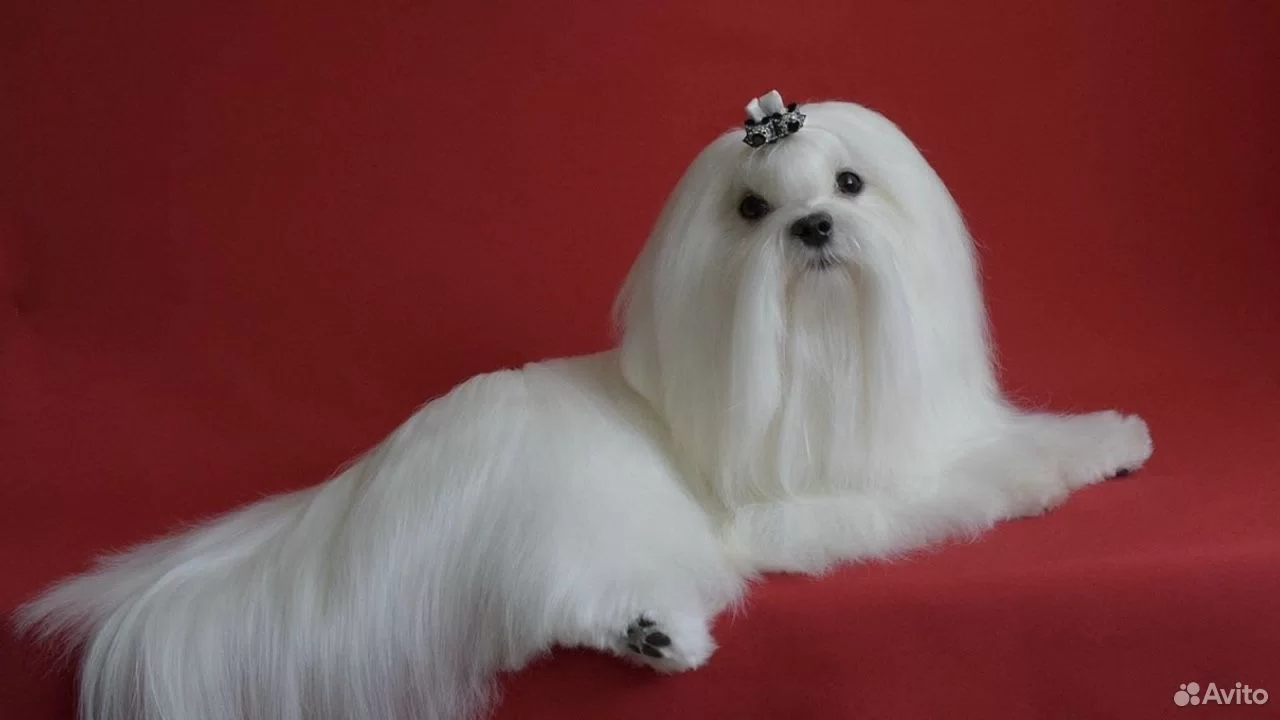
Fun Facts About the Maltese
- Throughout history, the Maltese has been called many names, including “The Roman Ladies’ Dog” and “The Comforter Dog.”
- They have hypoallergenic coats, making them a great option for individuals with allergies.
- Maltese dogs are natural entertainers—don’t be surprised if your pup performs little antics to make you laugh.
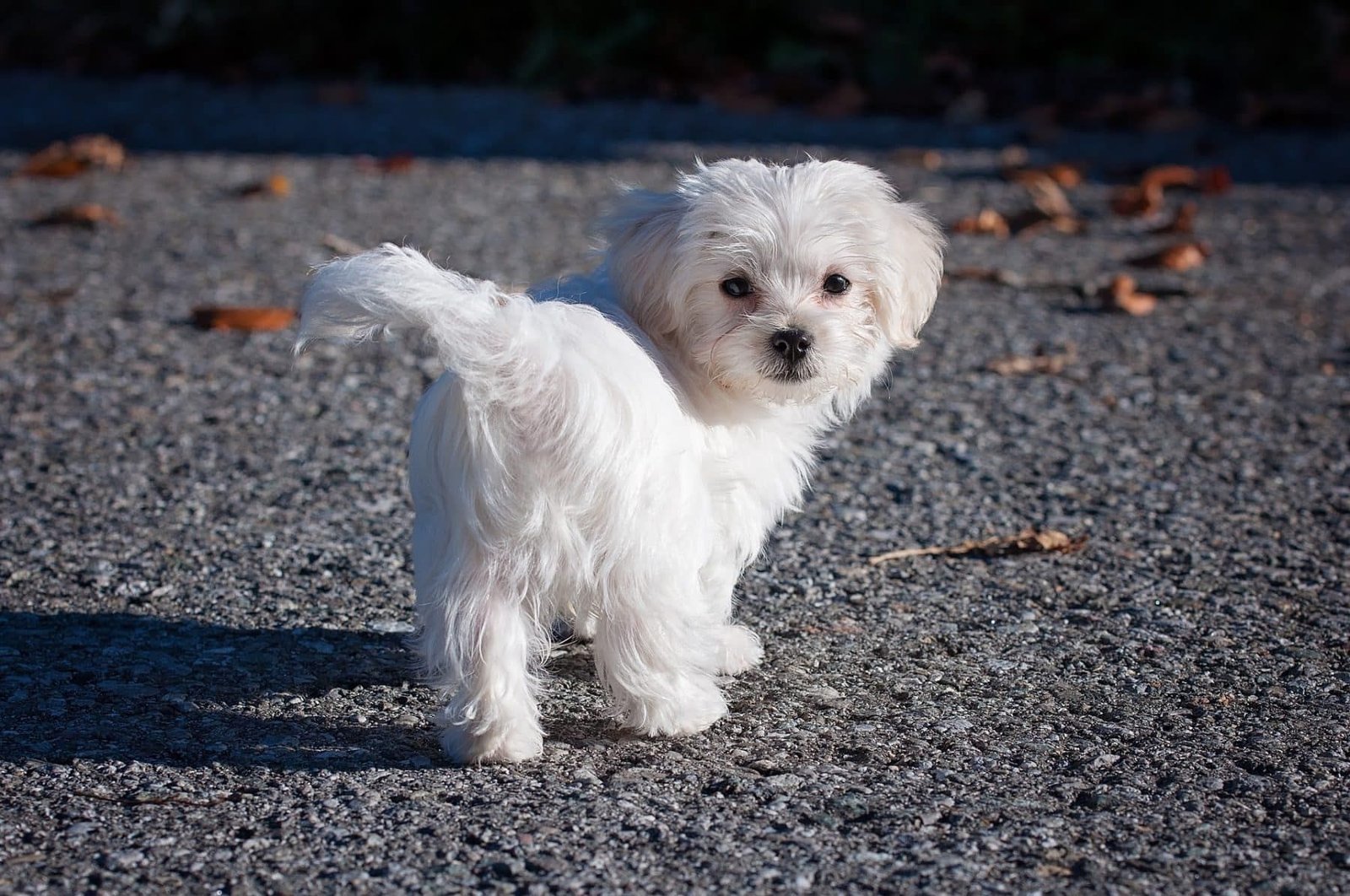
Maltese Related Books
For those interested in deeper understanding of the world of Maltese dogs, both historical and practical literature can provide valuable insights. Here are some recommended books that explore various aspects of the Maltese breed:
- “The Complete Maltese” by Angela Perri
This comprehensive guide covers everything from the history and characteristics of the Maltese to practical care tips and training advice. It’s perfect for both new owners and experienced enthusiasts.
- “Maltese: A Comprehensive Guide to Owning and Caring for Your Dog” by Joe Stahlkuppe
Ideal for prospective and current Maltese owners, this book provides detailed information on breed-specific care, nutrition, and health needs, along with expert guidance on living harmoniously with these delightful dogs.
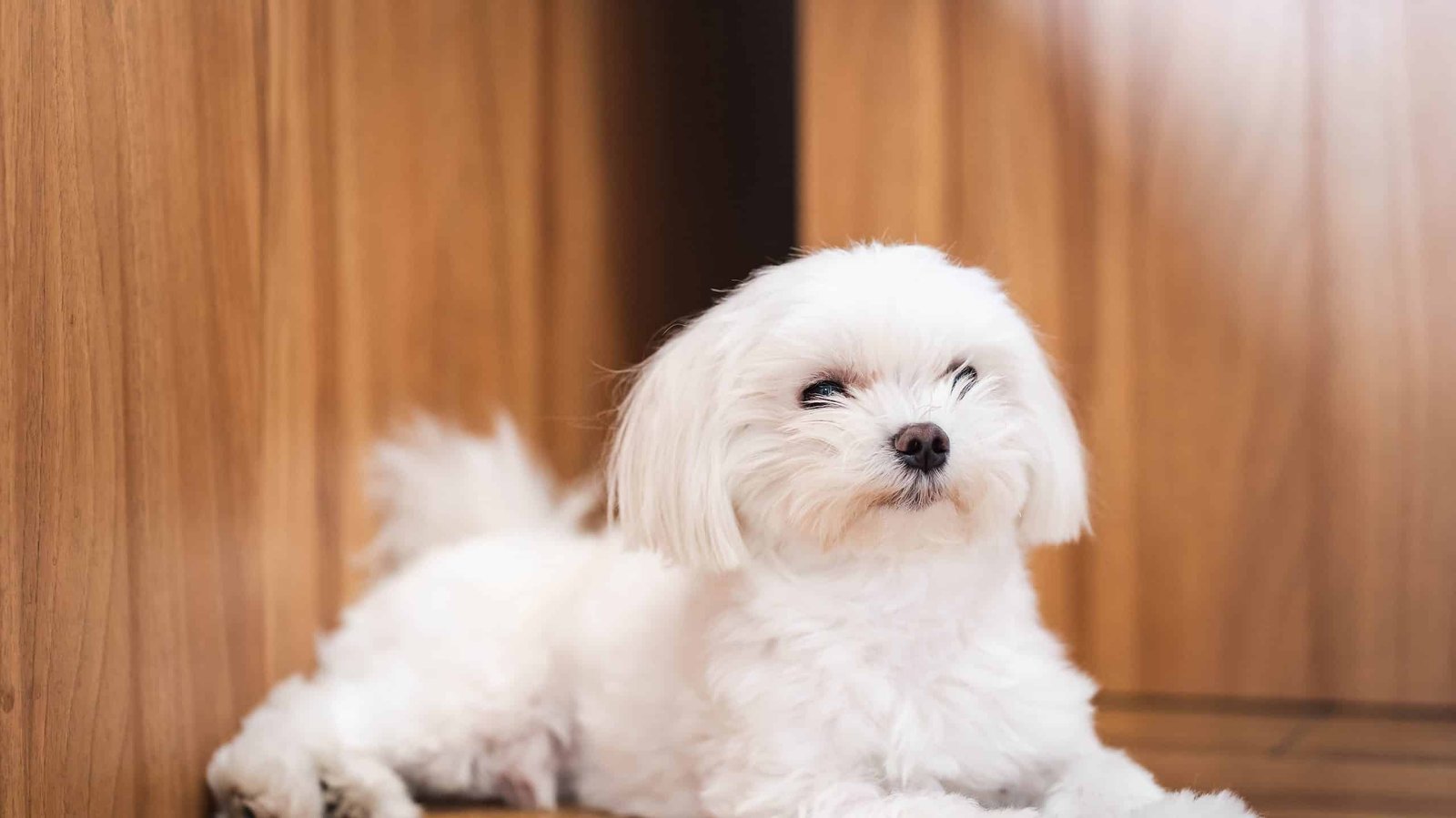
- “Maltese Dogs: Guide to Owning and Caring for Your Dog & Kids Storybook!” by Amanda Smith
A unique combination of a handbook and a children’s storybook, this book offers practical care tips alongside entertaining stories featuring Maltese dogs, making it enjoyable for the whole family.
- “The Maltese Dog Today” by Mary Smith
A modern look at the Maltese dog, this book examines current trends in breeding, showing, and caring for these elegant dogs, along with interviews with Maltese breeders and enthusiasts.
Exploring these resources can enhance your understanding and appreciation of the Maltese breed, offering both education and entertainment for dog lovers of all ages.
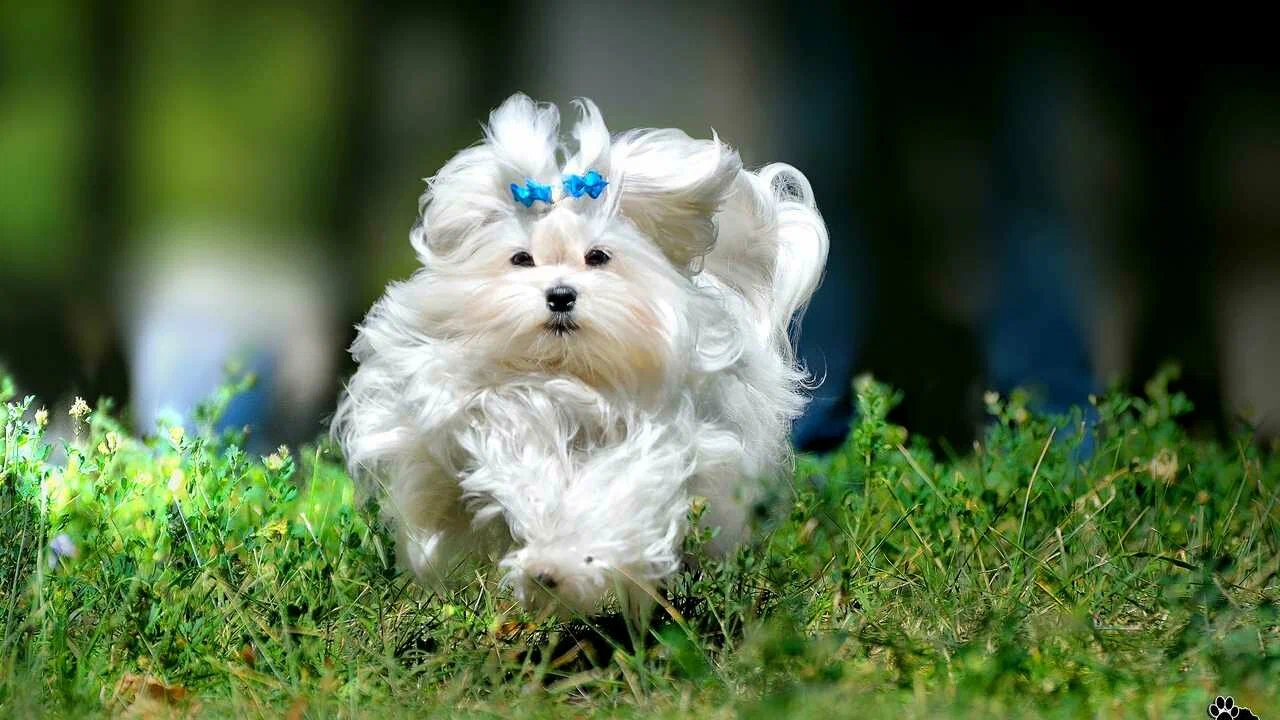
Maltese FAQs: Frequently Asked Questions with Government-Related Rules
Owning a Maltese, like any pet, comes with responsibilities and questions, particularly regarding legal and governmental guidelines. Here are some common FAQs that prospective and current Maltese owners may find helpful:
1. What are the legal requirements for owning a Maltese?
While requirements vary by location, you must ensure your Maltese is registered with your local municipality. This usually involves obtaining a dog license, which may require proof of vaccination, especially against rabies. Check your local government’s website for specific guidelines in your area.
2. Are there specific regulations about grooming a Maltese?
There are no direct government regulations regarding grooming, but maintaining your Maltese’s coat is crucial for their health and well-being. Neglecting grooming could fall under broader animal welfare laws concerning neglect. Regular grooming is not only important for the dog’s health, but ensures you comply with humane standards of care.

3. Are there travel restrictions when traveling with a Maltese?
Traveling with pets, including a Maltese, often requires adhering to specific regulations. Domestically, ensure your Maltese has identification and is up-to-date on vaccinations. For international travel, certain destinations may require a pet passport, additional vaccinations, or quarantine. Always check the rules of airlines and destination countries before traveling.
4. How can I ensure my Maltese is compliant with local noise ordinances?
Barking is natural, but excessive noise can violate local noise ordinances. Training your Maltese and providing adequate mental and physical stimulation can reduce unnecessary barking. If you receive complaints, consider consulting a professional trainer or behaviorist to address the issue.
5. Are there restrictions or guidelines for breeding Maltese dogs?
Breeding dogs often requires strict guidelines, and sometimes requires a special license. These regulations are in place to prevent overbreeding and ensure ethical breeding practices. If you’re considering breeding your Maltese, consult local regulations to ensure compliance, and consider the physical health and genetics of your dogs.

6. What should I do if I suspect animal cruelty or neglect towards a Maltese?
If you suspect a Maltese or any other animal is being mistreated, it’s important to report this to the appropriate authorities. Many areas have specific animal control departments or law enforcement branches that handle such cases. Reporting helps protect the welfare of the animals involved and abides by animal care laws.
Understanding and adhering to local government regulations is a significant part of responsible pet ownership. Always keep abreast of any changes in laws concerning pets in your area to ensure you provide the best care for your Maltese.
Maltese Latest Research
Recent studies have continued to enhance our understanding of the Maltese breed, focusing on various aspects such as health, genetics, and behavior. These research endeavors are crucial for breeders, veterinarians, and Maltese enthusiasts, who aim to provide optimal care and maintain the breed’s well-being.
- Genetic Diversity and Health
A study on the genetic diversity of the Maltese has revealed important insights into health issues prevalent in the breed. Researchers emphasize the need for responsible breeding practices to prevent inherited disorders. Read more about this study here.
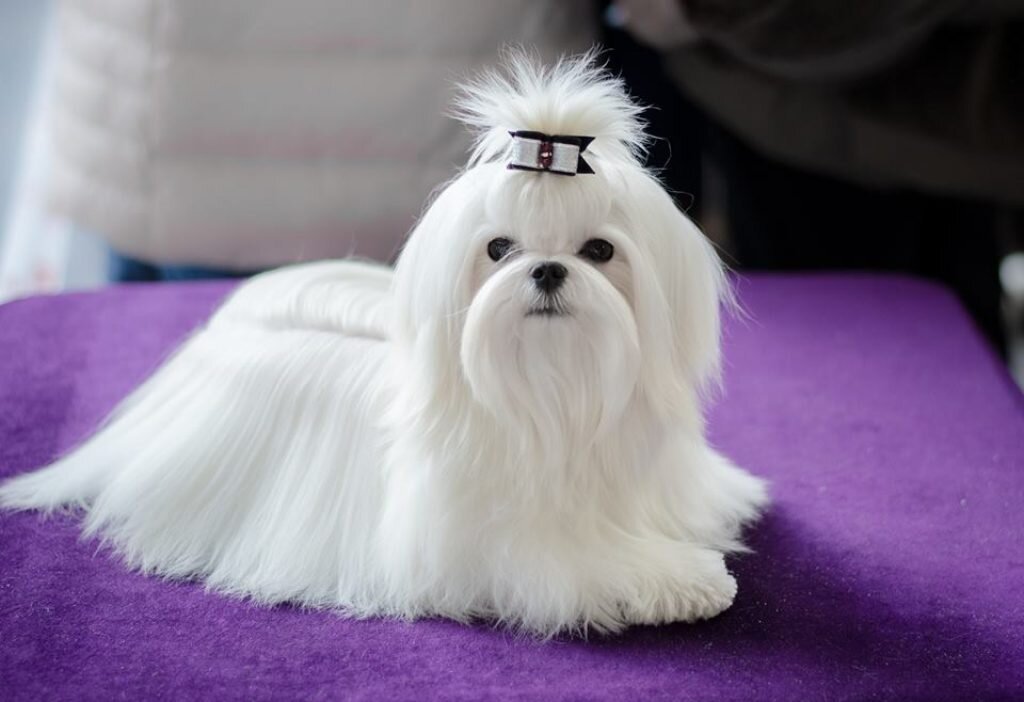
- Behavioral Analysis
Recent behavioral research has focused on understanding the temperament of the Maltese and how it interacts with human companions. This study provides valuable information for training and socialization techniques. Access the full research paper here.
- Nutritional Needs and Longevity
Research on the specific dietary requirements of the Maltese suggests that a balanced diet significantly contributes to longevity and health. Customized nutrition plans are recommended for addressing breed-specific needs. Find more details in this resource.
Staying informed on the latest research helps owners and breeders contribute positively to the breed’s sustained well-being and adaptation over time. These studies provide a wealth of knowledge critical for advancing the care and understanding of the Maltese.
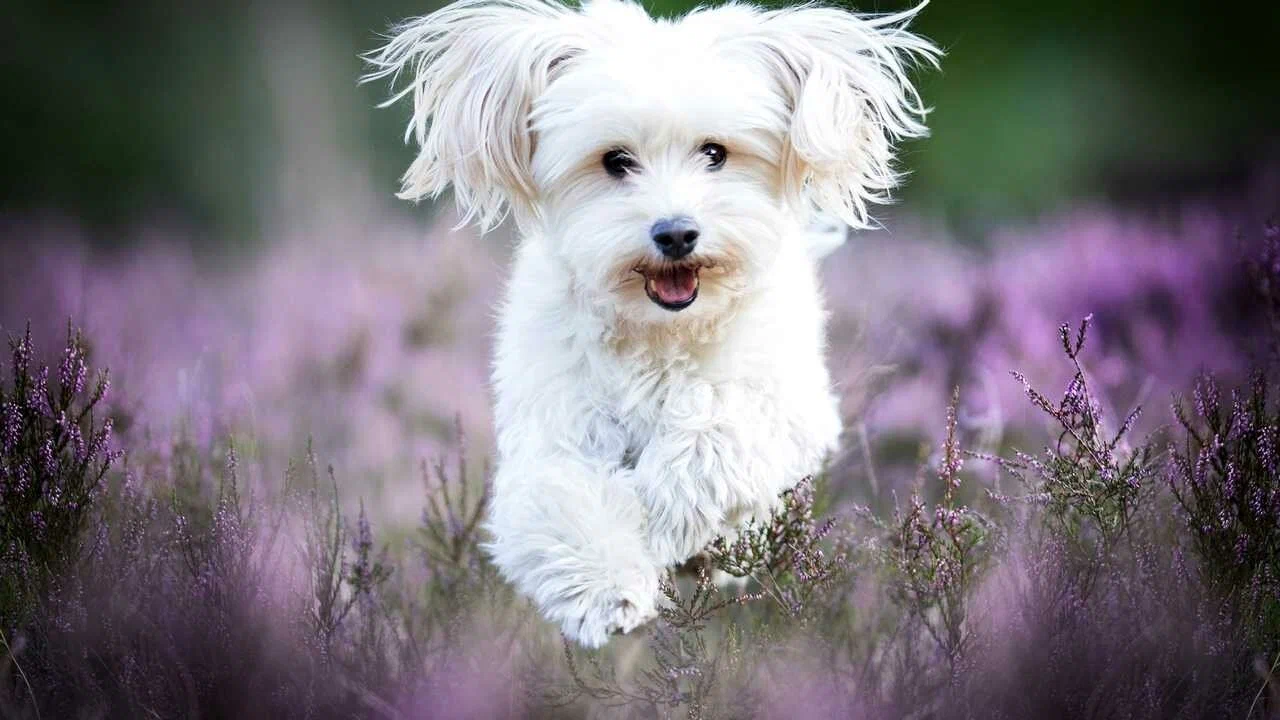


SMALL DOG BREEDS
”Choosing the Right Dog Breed: for Your Lifestyle”
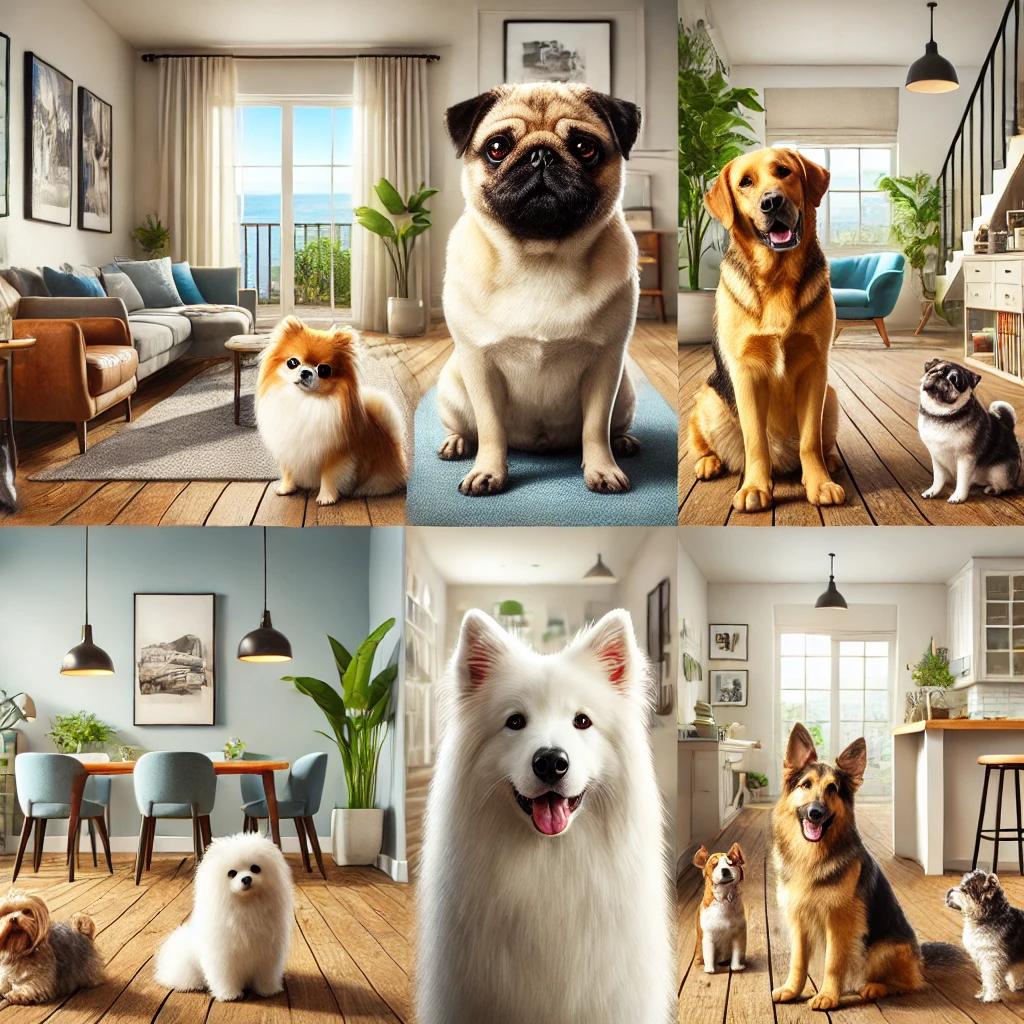
A Very Important Part of Choosing the Right Companion

Choosing the right dog breed is a crucial decision that affects both the owner and the dog. With hundreds of breeds available, selecting the best match for your lifestyle ensures a happy and healthy relationship. Whether you are looking for a high-energy companion or a low-maintenance pet, considering factors like living space, activity level, and personal preferences is essential.
For more information regarding 4 seasonal cxcercieses of all dog breeds recommended by the doctors and experts,you can visit our youtube channel:
Selecting the right dog breed is essential for ensuring a harmonious relationship between you and your pet. Your lifestyle, living space, and financial capacity all play a significant role in determining which breed suits you best. Whether you are a job holder, a businessperson, a student, or a homemaker, there is a perfect breed for everyone. This guide will help you make the best choice based on your financial position and daily routine.
Factors to Consider When Choosing a Dog Breed

1. Size and Living Space
The size of a dog significantly impacts its adaptability to different living environments.
- Small Breeds ( Chihuahua, French Bulldog, Pomeranian) – Ideal for apartments and small homes.
- Medium Breeds ( Border Collie, Cocker Spaniel, Beagle) – Suitable for both small homes and larger spaces.
- Large Breeds ( Labrador Retriever, Golden Retriever, German Shepherd) – Require more space, best suited for homes with yards.
2. Activity Level and Energy Requirements
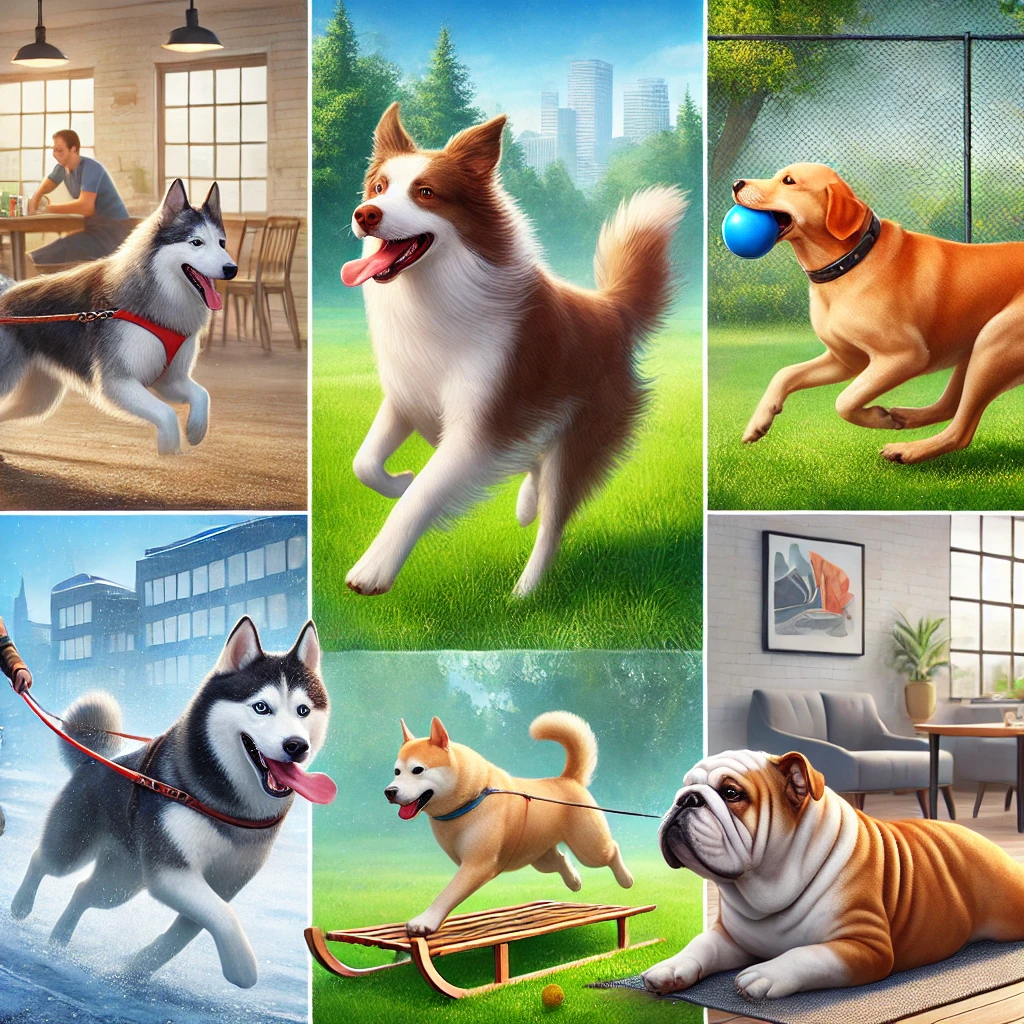
Some breeds require intense physical activity, while others are content with minimal exercise.
- High-Energy Dogs ( Siberian Husky, Australian Shepherd, Dalmatian) – Perfect for active individuals or families who enjoy outdoor activities.
- Moderate-Energy Dogs ( Boxer, Bulldog, Corgi) – Need regular exercise but adapt well to moderate activity levels.
- Low-Energy Dogs ( Basset Hound, Shih Tzu, Pug) – Best for those with a less active lifestyle or limited mobility.
3. Grooming and Maintenance Needs
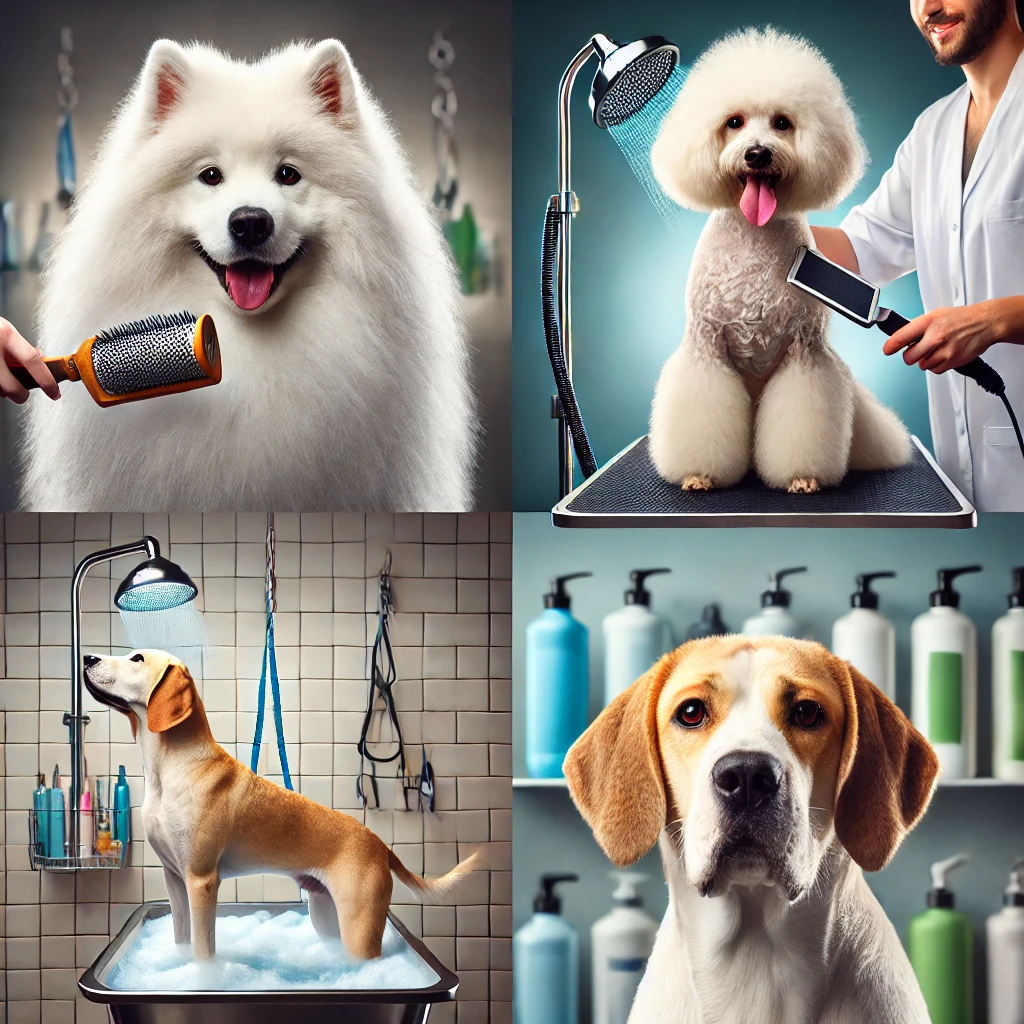
Different breeds have varied grooming requirements based on coat type.
- Low Maintenance ( Beagle, Doberman, Boxer) – Minimal grooming required.
- Moderate Maintenance (Golden Retriever, Cocker Spaniel, Border Collie) – Regular brushing and occasional grooming.
- High Maintenance (Poodle, Afghan Hound, Shih Tzu) – Require frequent grooming and coat care.
4. Temperament and Family Compatibility
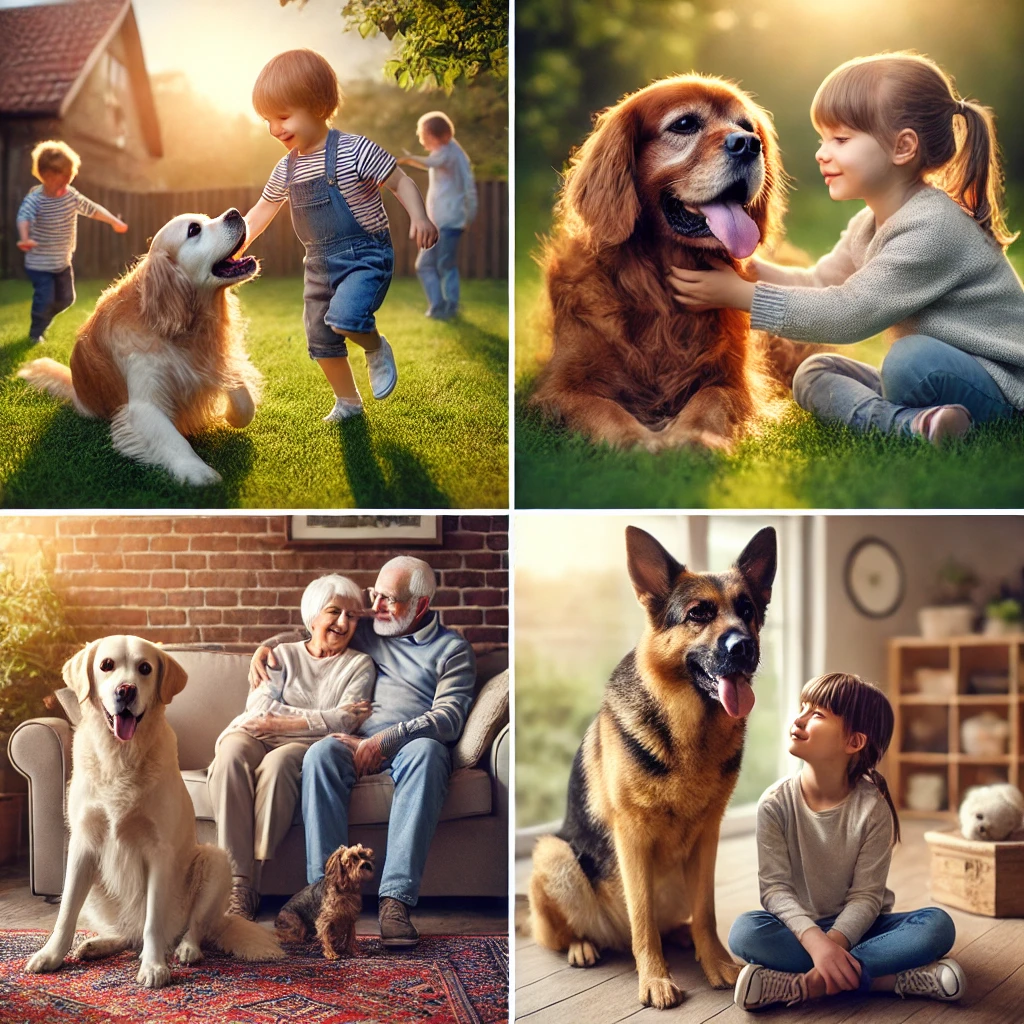
Understanding a breed’s temperament helps in choosing a dog that fits well with your household.
-
Great with Families (Labrador Retriever, Golden Retriever, Collie) – Friendly, affectionate, and good with children.
-
Independent Breeds ( Akita, Afghan Hound, Chow Chow) – Require experienced handling and training.
-
Protective Breeds ( Rottweiler, German Shepherd, Doberman) – Naturally alert and good for home security.
5. Trainability and Intelligence
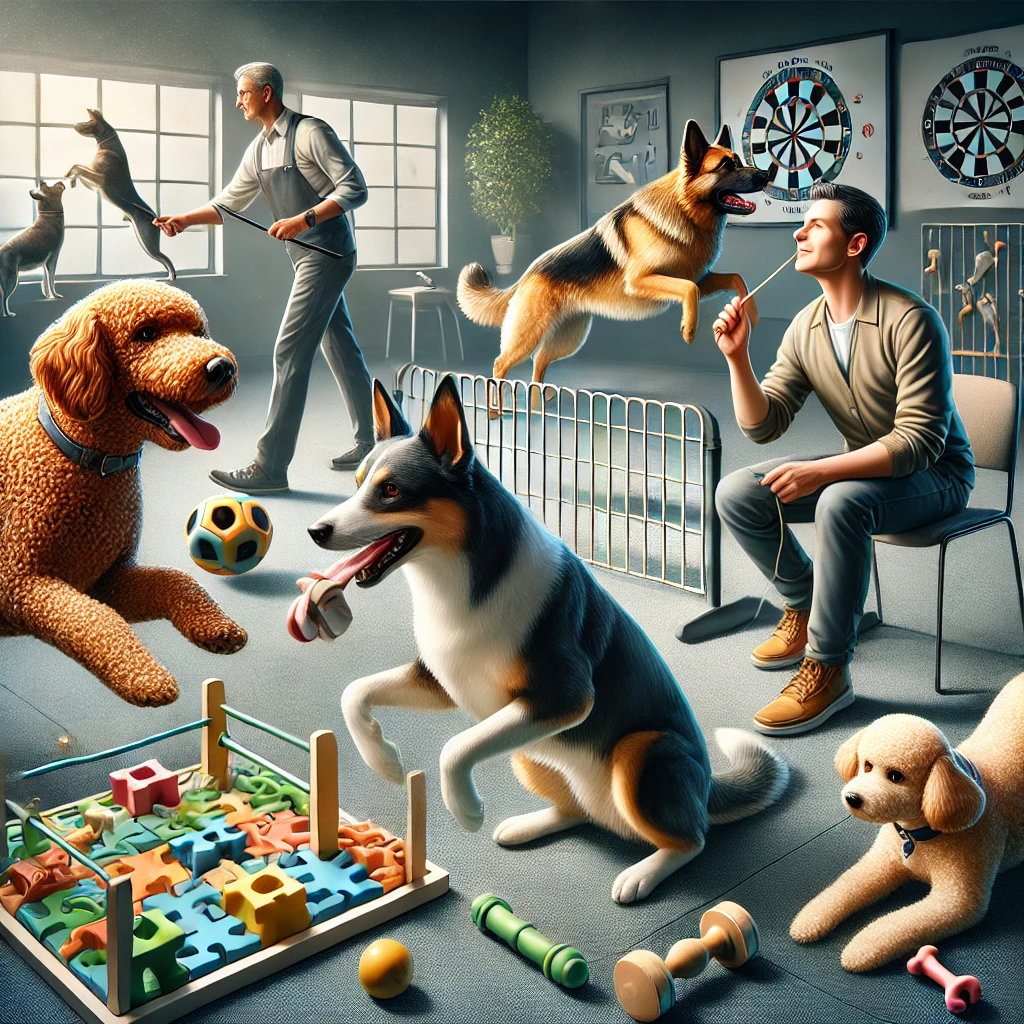
Some breeds are more eager to learn and easier to train than others.
-
Highly Trainable ( Border Collie, Poodle, German Shepherd) – Quick learners and excel in obedience training.
-
Moderately Trainable ( Beagle, Bulldog, Shiba Inu) – Can learn commands but may require patience.
-
Independent Thinkers (Afghan Hound, Basenji, Chow Chow) – Less eager to please, requiring consistent training.
Matching a Dog Breed to Your Lifestyle

For Active Individuals and Outdoor Enthusiasts
If you enjoy hiking, running, or outdoor adventures, consider breeds with high stamina and endurance.
-
Best choices: Siberian Husky, Border Collie, Labrador Retriever, Dalmatian
For Apartment Dwellers and City Living

Breeds that adapt well to small spaces and don’t require excessive exercise are ideal.
-
Best choices: French Bulldog, Cavalier King Charles Spaniel, Dachshund, Pug
For Families with Children
A family-friendly dog should be gentle, patient, and enjoy interaction.
-
Best choices: Golden Retriever, Labrador Retriever, Beagle, Boxer
For First-Time Dog Owners
Some breeds are easier to handle and more forgiving of training mistakes.
-
Best choices: Cavalier King Charles Spaniel, Labrador Retriever, Poodle, Bichon Frise
For Seniors or Low-Activity Owners

A low-energy, affectionate breed is best for companionship.
-
Best choices: Shih Tzu, Pomeranian, Basset Hound, Maltese
For Allergy Sufferers
Hypoallergenic breeds shed less and produce fewer allergens.
-
Best choices: Poodle, Schnauzer, Maltese, Portuguese Water Dog
Choosing the Right Dog Breed for Your Lifestyle
Selecting the right dog breed is essential for ensuring a harmonious relationship between you and your pet. Your lifestyle, living space, and financial capacity all play a significant role in determining which breed suits you best. Whether you are a job holder, a businessperson, a student, or a homemaker, there is a perfect breed for everyone. This guide will help you make the best choice based on your financial position and daily routine.
1. Job Holders Living in Apartments (Limited Salary)
For individuals working 9-to-5 jobs with limited salaries and living in apartments, a small breed is the best option. These dogs require minimal space, have lower food costs, and are easy to manage.
Best Breeds:
- Pug – Friendly, adaptable, and requires moderate exercise.
- French Bulldog – Low maintenance, affectionate, and apartment-friendly.
- Shih Tzu – Great for small spaces, but requires regular grooming.
- Chihuahua – Low feeding costs, small size, and minimal exercise needs.
2. Businessmen (High-Income & Large Living Spaces)

Businesspersons who have larger living spaces and a higher budget can afford to own bigger or more luxurious dog breeds. These dogs often require more space, food, and maintenance.
Best Breeds:
- Golden Retriever – Highly trainable, loving, and great with families.
- Labrador Retriever – Active, intelligent, and a great companion.
- Doberman Pinscher – Excellent guard dog, loyal, and protective.
- German Shepherd – Highly trainable, protective, and versatile.
- Siberian Husky – Requires large space and regular exercise; ideal for active owners.
3. Female Job Holders (Limited Salary & Apartment Living)

For working women who live in apartments, a low-maintenance dog that does not require extensive training or exercise is ideal.
Best Breeds:
- Maltese – Small, affectionate, and requires little space.
- Pomeranian – Active indoors, does not need large outdoor space.
- Cavalier King Charles Spaniel – Gentle, good-natured, and easy to manage.
- Miniature Schnauzer – Low shedding and apartment-friendly.
4. Female Businesswomen (High-Income & Large Homes)
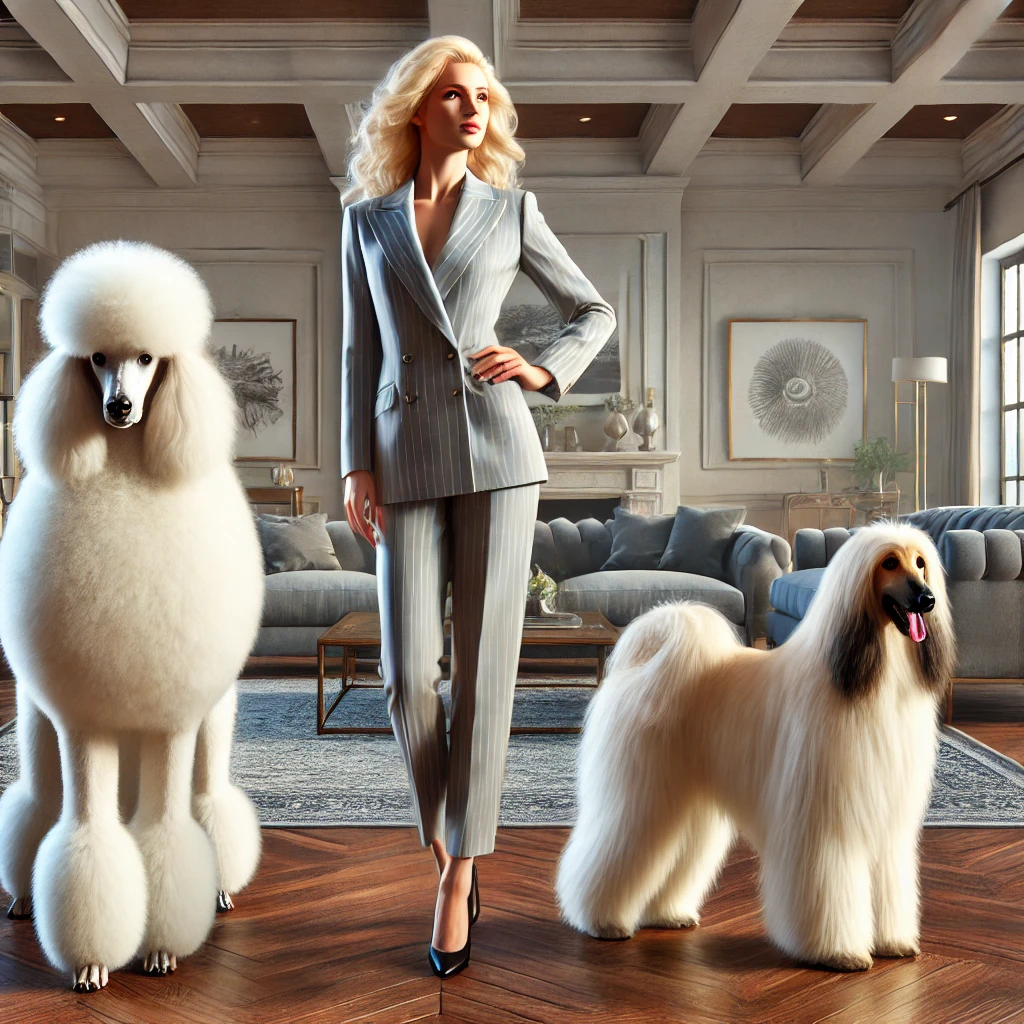
Women who run businesses and have a high budget can opt for luxury breeds that require proper maintenance and space.
Best Breeds:
- Poodle (Standard or Toy) – Elegant, intelligent, and hypoallergenic.
- Samoyed – Beautiful, affectionate, and needs regular grooming.
- Great Dane – Majestic, affectionate, and requires ample space.
- Afghan Hound – Stylish, independent, and requires grooming.
5. Homemakers (Stay-at-Home Ladies)

Housewives with time to take care of their pets can opt for affectionate and family-friendly breeds that require attention but fit well within a household setting.
Best Breeds:
- Beagle – Loyal, friendly, and great with children.
- Cocker Spaniel – Playful, affectionate, and family-oriented.
- Bichon Frise – Cheerful, hypoallergenic, and a great indoor companion.
- Shetland Sheepdog – Smart, obedient, and loves attention.
6. Students (Limited Budget & Space)
Students living in hostels or small apartments with limited budgets need breeds that are low-maintenance, small in size, and require minimal grooming.
Best Breeds:
- Dachshund – Compact, playful, and easy to maintain.
- Jack Russell Terrier – Energetic but does well in small spaces.
- Yorkshire Terrier – Low feeding costs, small size, and affectionate.
- Miniature Pinscher – Low-maintenance, playful, and independent.
7. College & University Students (Moderate Budget)
University students who have moderate budgets and are living in rented apartments need friendly and trainable dogs that adapt well to their routine.
Best Breeds:
- Border Collie – Intelligent and easy to train.
- Australian Shepherd – Active and good for those who love outdoor activities.
- Corgi – Social, adaptable, and compact.
- Boston Terrier – Smart, playful, and great for small apartments.
FAQs: Choosing the Right Dog Breed for Your Lifestyle
Selecting the perfect dog breed involves more than just falling for a cute face—it’s about matching energy levels, space requirements, and personality to your daily life. Below are the most common questions (and answers!) to help you find your ideal canine companion.
1. How Do I Know Which Dog Breed Is Right for Me?
Consider these factors:
Activity Level – Do you want a jogging buddy or a couch potato?
Living Space – Apartment-friendly vs. large-yard-needed breeds.
Grooming Commitment – High-maintenance coats vs. low-shedding breeds.
Time Availability – Some breeds need constant companionship; others are more independent.
Family Needs – Kid-friendly, hypoallergenic, or good with other pets?
Tip: Take online breed quizzes (AKC, Petfinder) for personalized suggestions.
2. What Are the Best Dog Breeds for Apartment Living?
Smaller, quieter, and lower-energy breeds tend to thrive in apartments:
- French Bulldog
- Cavalier King Charles Spaniel
- Shih Tzu
- Greyhound (surprisingly lazy indoors!)
- Boston Terrier
Avoid: Extremely vocal (Beagles) or high-energy breeds (Border Collies) unless you can provide ample exercise.
3. Which Breeds Are Best for Active Owners?
If you love hiking, running, or outdoor adventures, consider:
- Australian Shepherd
- Labrador Retriever
- Siberian Husky
- Vizsla
- Jack Russell Terrier
Warning: These breeds can become destructive if under-exercised!
4. What Are the Best Low-Maintenance Dog Breeds?
For minimal grooming and moderate energy:
- Chihuahua (short-haired)
- Dachshund
- Whippet
- Basenji (self-cleaning, like a cat!)
- Rat Terrier
Note: “Low-maintenance” doesn’t mean zero effort—all dogs need love, training, and vet care.
5. Which Breeds Are Best for Families with Kids?
Look for patient, gentle, and sturdy breeds:
- Golden Retriever
- Labrador Retriever
- Beagle
- Boxer
- Newfoundland (gentle giants!)
Avoid: Fragile toy breeds (e.g., Italian Greyhounds) or aggressive guard dogs if you have small children.
6. What Are the Best Hypoallergenic Dog Breeds?
For allergy sufferers, consider low-shedding breeds:
- Poodle (all sizes)
- Bichon Frise
- Portuguese Water Dog
- Schnauzer
- Maltese
Myth Buster: No dog is 100% hypoallergenic, but these produce less dander.
7. Should I Get a Puppy or an Adult Dog?
| Puppy | Adult Dog |
|---|---|
| Requires training (potty, obedience) | Often already trained |
| High energy, needs socialization | Calmer, established personality |
| Longer time commitment | May adapt quicker to your routine |
| Cute but destructive phase | Known behavior traits |
Best for first-time owners? Many recommend adopting an adult dog for an easier transition.
8. How Do I Find a Reputable Breeder vs. Adopting?
Reputable Breeder:
- Health-tests parents, provides AKC papers, allows meet-ups.
- Avoids “puppy mills” (red flag: multiple litters always available).
Adoption:
- Shelters and rescues often have mixed breeds (healthier genetic diversity!).
- Adult dogs’ personalities are already known.
Ethical Choice: Consider breed-specific rescues if you want a purebred without supporting breeding mills.
9. What If I Fall in Love with a Breed That Doesn’t Fit My Lifestyle?
- Be honest: Can you adjust your routine (more walks, grooming)?
- Compromise: Example: Love Huskies but live in a hot climate? Consider a mutt with Husky looks but less demanding needs.
- Foster First – Try before committing!
10. Where Can I Research Breed Temperaments & Health Issues?
Trusted Resources:
- AKC.org (Breed profiles)
- Your local vet (Breed-specific advice)
- Dog forums (Real-owner experiences)
- Meet the breed – Visit dog shows or breed meetups.
Closing Statement
The “perfect” dog is the one whose needs align with your lifestyle. Whether you adopt a playful mutt or a pedigreed pup, the right match means years of happiness for both of you!
Selecting the right dog breed is crucial for a happy and healthy companionship. Whether you are a job holder, a businessperson, a homemaker, or a student, there is a perfect breed to match your lifestyle and financial capability. By considering factors such as living space, budget, and time availability, you can ensure that your furry friend fits seamlessly into your life.
For more expert dog care tips, visit DogsReader and follow us on our social media platforms!
DogsReader – Your Trusted Canine Companion Guide
For more expert insights on dog breeds and pet care, visit DogsReader! Stay connected with us on Facebook and Instagram for the latest updates.
SMALL DOG BREEDS
How Cold is Too Cold for a Dog:
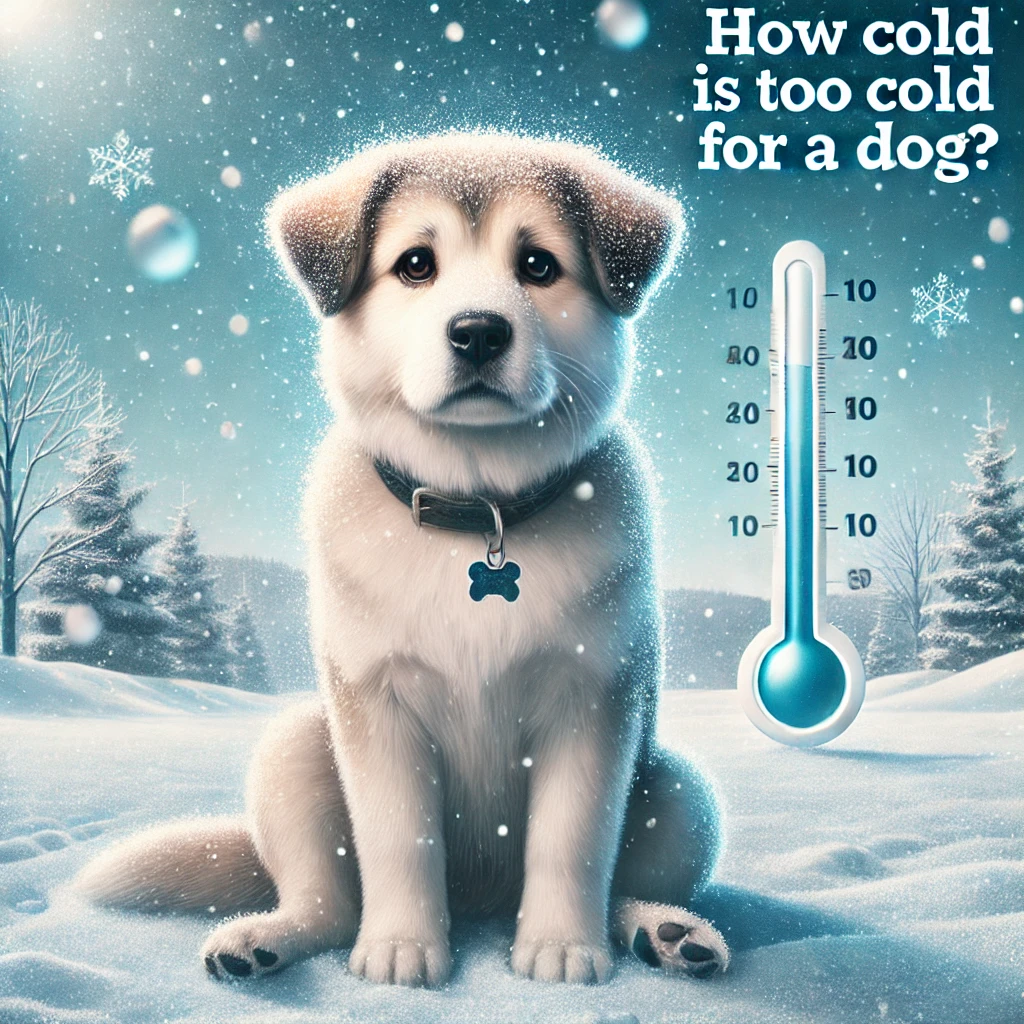
A Comprehensive Guide to Keeping Your Pup Safe in Winter
How Cold is Too Cold for a Dog: As temperatures drop, many dog owners wonder: How cold is too cold for a dog? While some dogs thrive in chilly weather, others are more sensitive to the cold and can suffer from hypothermia, frostbite, or other health issues. Understanding your dog’s tolerance for cold weather is essential to keeping them safe and comfortable during winter. This article covers everything you need to know about cold weather safety for dogs, including breed-specific considerations, signs of cold stress, and tips for protecting your furry friend.
Factors That Determine a Dog’s Cold Tolerance
Not all dogs handle cold weather the same way. Several factors influence how well your dog can tolerate the cold:
- Breed and Size:
- Cold-Weather Breeds:
- Huskies, Malamutes, and Saint Bernards have thick double coats and are built for cold climates.
- Small or Short-Haired Breeds:
- Chihuahuas, Greyhounds, and Dachshunds are more vulnerable to the cold.
- Coat Type:
- Dogs with thick, double-layered coats are better insulated against the cold.
- Short-haired or hairless dogs (e.g., Chinese Crested) need extra protection.
- Age and Health:
- Puppies, senior dogs, and dogs with health conditions (e.g., arthritis) are more sensitive to cold temperatures.
- Acclimatization:
- Dogs accustomed to cold weather handle it better than those used to warmer climates.
How Cold is Too Cold for a Dog?
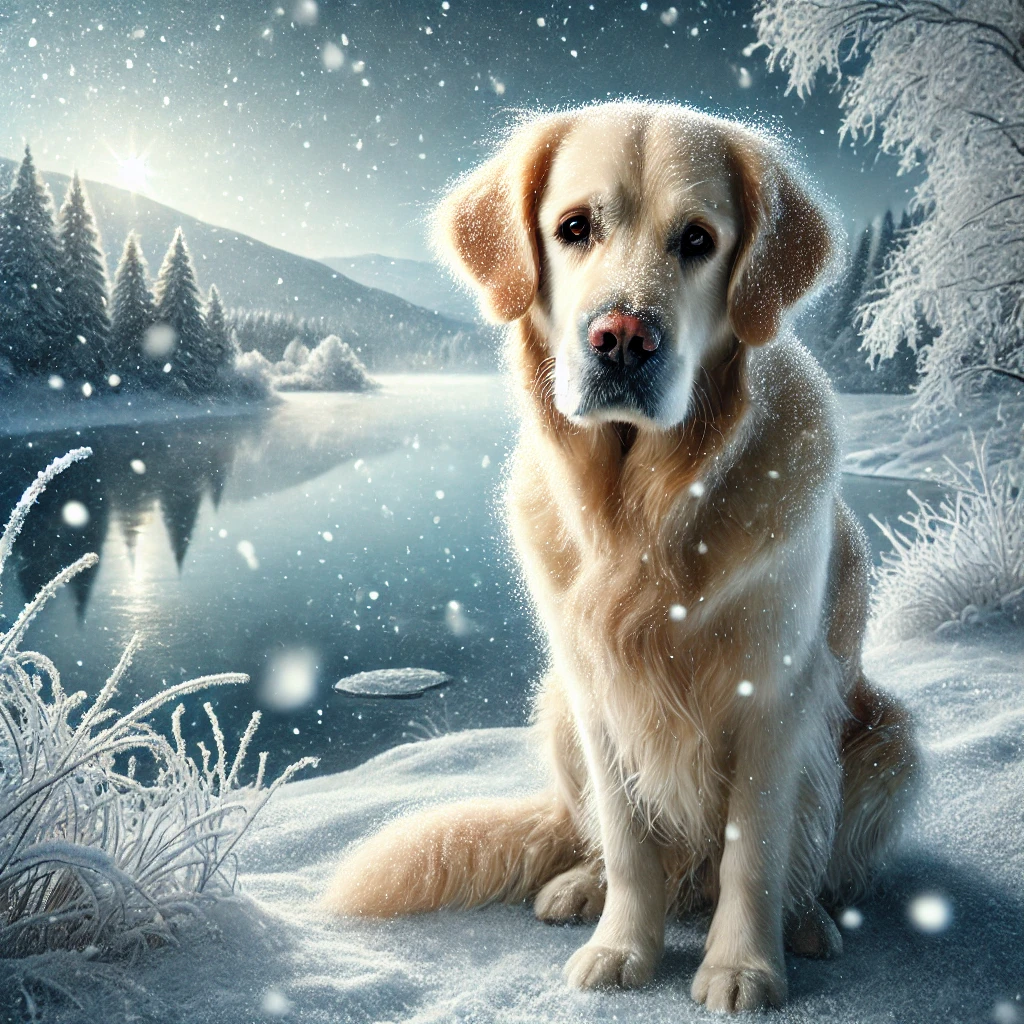
The answer depends on your dog’s breed, size, and health. Here’s a general guideline:
| Temperature Range | Risk Level | Recommendations |
|---|---|---|
| 45°F (7°C) and above | Low Risk | Most dogs are comfortable. Monitor small or short-haired breeds. |
| 32°F (0°C) to 45°F (7°C) | Moderate Risk | Limit time outdoors. Provide coats for small or short-haired dogs. |
| 20°F (-6°C) to 32°F (0°C) | High Risk | Short walks only. Use protective gear like coats and boots. |
| Below 20°F (-6°C) | Extreme Risk | Avoid prolonged exposure. Frostbite and hypothermia are likely. |
Signs Your Dog is Too Cold
Watch for these signs that your dog is feeling the cold:
- Shivering: The most obvious sign of discomfort.
- Whining or Anxiety: Your dog may want to go inside.
- Slow Movements: Cold can make joints stiff and movement difficult.
- Paw Lifting: Indicates that the ground is too cold for their paws.
- Pale or Gray Gums: A sign of hypothermia or frostbite.
If you notice any of these signs, bring your dog indoors immediately and warm them up gradually.
Breed-Specific Considerations
Different breeds have different cold tolerances:
1. Cold-Weather Breeds (e.g., Siberian Husky, Alaskan Malamute)
- Can handle temperatures as low as -20°F (-29°C).
- Still need monitoring for frostbite on ears and paws.
2. Small or Toy Breeds (e.g., Chihuahua, Toy Poodle)
- At risk in temperatures below 45°F (7°C).
- Require sweaters or coats for outdoor walks.
3. Short-Haired Breeds (e.g., Greyhound, Boxer)
- Vulnerable in temperatures below 32°F (0°C).
- Need protective gear like coats and boots.
4. Senior Dogs and Puppies
- Less able to regulate body temperature.
- Limit outdoor time in cold weather.
How to Protect Your Dog in Cold Weather
- Dress Them Warmly:
-
- Use dog coats or sweaters for small, short-haired, or senior dogs.
- Protect paws with booties to prevent frostbite and exposure to salt or ice melt.
- Limit Outdoor Time:
-
- Shorten walks and avoid prolonged exposure to cold.
- Provide indoor exercise and mental stimulation.
- Create a Warm Space:
-
- Ensure your dog has a warm, draft-free place to sleep indoors.
- Use heated pet beds or blankets for extra warmth.
- Check Paws Regularly:
-
- Wipe paws after walks to remove ice, salt, or chemicals.
- Apply paw balm to prevent cracking and dryness.
- Adjust Their Diet:
-
- Dogs burning extra energy to stay warm may need more calories.
- Consult your vet before making dietary changes.
Dangers of Cold Weather for Dogs
- Hypothermia:
-
- Occurs when a dog’s body temperature drops dangerously low.
- Symptoms include shivering, lethargy, and shallow breathing.
- Frostbite:
-
- Affects extremities like ears, paws, and tails.
- Signs include pale or gray skin, swelling, and blisters.
- Chemical Exposure:
-
- Ice melt and antifreeze are toxic to dogs.
- Rinse your dog’s paws after walks to remove chemicals.
What to Do if Your Dog Gets Too Cold
- Bring Them Indoors: Move your dog to a warm, dry place.
- Wrap Them in Blankets: Use warm (not hot) blankets to raise their body temperature.
- Offer Warm Water: Provide lukewarm water to drink.
- Contact Your Vet: If symptoms of hypothermia or frostbite persist, seek immediate veterinary care.
Closing Statement
Understanding how cold is too cold for your dog is crucial for their safety and comfort during winter. By considering your dog’s breed, size, and health, you can take the necessary steps to protect them from the cold. Whether it’s dressing them in a cozy sweater, limiting outdoor time, or providing a warm indoor space, your dog relies on you to keep them safe during the chilly months. Stay vigilant, watch for signs of cold stress, and enjoy the winter season with your furry friend!
Frequently Asked Questions (FAQs) About Cold Weather Safety for Dogs
Below are detailed answers to common questions about how cold is too cold for dogs and how to keep them safe during winter.
1. How cold is too cold for dogs?
It depends on your dog’s breed, size, and health. Generally:
- 45°F (7°C) and above: Safe for most dogs.
- 32°F (0°C) to 45°F (7°C): Risky for small, short-haired, or senior dogs.
- Below 20°F (-6°C): Dangerous for all dogs; avoid prolonged exposure.
2. Can dogs get hypothermia?
Yes, dogs can develop hypothermia if exposed to cold temperatures for too long. Symptoms include shivering, lethargy, and shallow breathing. Immediate warming and veterinary care are essential.
3. What are the signs that my dog is too cold?
Signs include:
- Shivering
- Whining or anxiety
- Slow movements or stiffness
- Lifting paws off the ground
- Pale or gray gums
4. Do dogs need coats in winter?
Small, short-haired, or senior dogs benefit from coats or sweaters in cold weather. Cold-weather breeds like Huskies usually don’t need extra layers.
5. How can I protect my dog’s paws in winter?
- Use dog booties to protect against cold, ice, and chemicals.
- Apply paw balm to prevent cracking.
- Wipe paws after walks to remove ice, salt, or antifreeze.
6. Can dogs get frostbite?
Yes, frostbite can affect a dog’s ears, paws, and tail. Signs include pale or gray skin, swelling, and blisters. Seek veterinary care if you suspect frostbite.
7. How long can dogs stay outside in the cold?
It depends on the temperature and your dog’s breed:
- Above 45°F (7°C): Most dogs can stay outside for extended periods.
- Below 32°F (0°C): Limit outdoor time to 10-15 minutes.
- Below 20°F (-6°C): Only allow quick bathroom breaks.
8. Are some breeds more cold-tolerant than others?
Yes, cold-weather breeds like Huskies and Malamutes are more cold-tolerant, while small or short-haired breeds like Chihuahuas and Greyhounds are more vulnerable.
9. Can puppies and senior dogs handle the cold?
Puppies and senior dogs are less able to regulate their body temperature and are more sensitive to the cold. Limit their exposure and provide extra warmth.
10. What should I do if my dog gets too cold?
- Bring them indoors immediately.
- Wrap them in warm blankets.
- Offer lukewarm water to drink.
- Contact your vet if symptoms of hypothermia or frostbite persist.
11. Are heated dog beds safe?
Yes, heated dog beds are safe if used correctly. Choose beds with chew-resistant cords and automatic shut-off features.
12. Can dogs sleep outside in winter?
It’s not recommended. Even cold-weather breeds need a warm, dry shelter if they sleep outside. However, it’s safer to bring all dogs indoors during winter.
13. How can I exercise my dog in cold weather?
- Shorten walks and avoid icy or snowy areas.
- Provide indoor exercise like fetch or puzzle toys.
- Visit indoor dog parks or playdates.
14. Are ice melt and antifreeze dangerous for dogs?
Yes, both are toxic. Ice melt can irritate paws, and antifreeze is deadly if ingested. Rinse your dog’s paws after walks and keep antifreeze out of reach.
15. Should I adjust my dog’s diet in winter?
Dogs burning extra energy to stay warm may need more calories. Consult your vet before making dietary changes.
16. Can dogs wear boots in winter?
Yes, boots protect paws from cold, ice, and chemicals. Introduce them gradually to ensure your dog is comfortable.
17. How can I tell if my dog is enjoying the snow?
Signs your dog is enjoying the snow include:
- Playful behavior (running, digging).
- Wagging tail and relaxed body language.
- No signs of shivering or discomfort.
18. What temperature is too cold for small dogs?
Small dogs are at risk in temperatures below 45°F (7°C). Provide coats and limit outdoor time in colder weather.
19. Can dogs get sick from being wet in the cold?
Yes, wet fur loses its insulating properties, increasing the risk of hypothermia. Dry your dog thoroughly after they get wet.
20. How can I create a warm space for my dog indoors?
- Provide a cozy bed in a draft-free area.
- Use blankets or a heated pet bed.
- Keep the room temperature comfortable.
SMALL DOG BREEDS
How to Draw a Dog : Latest
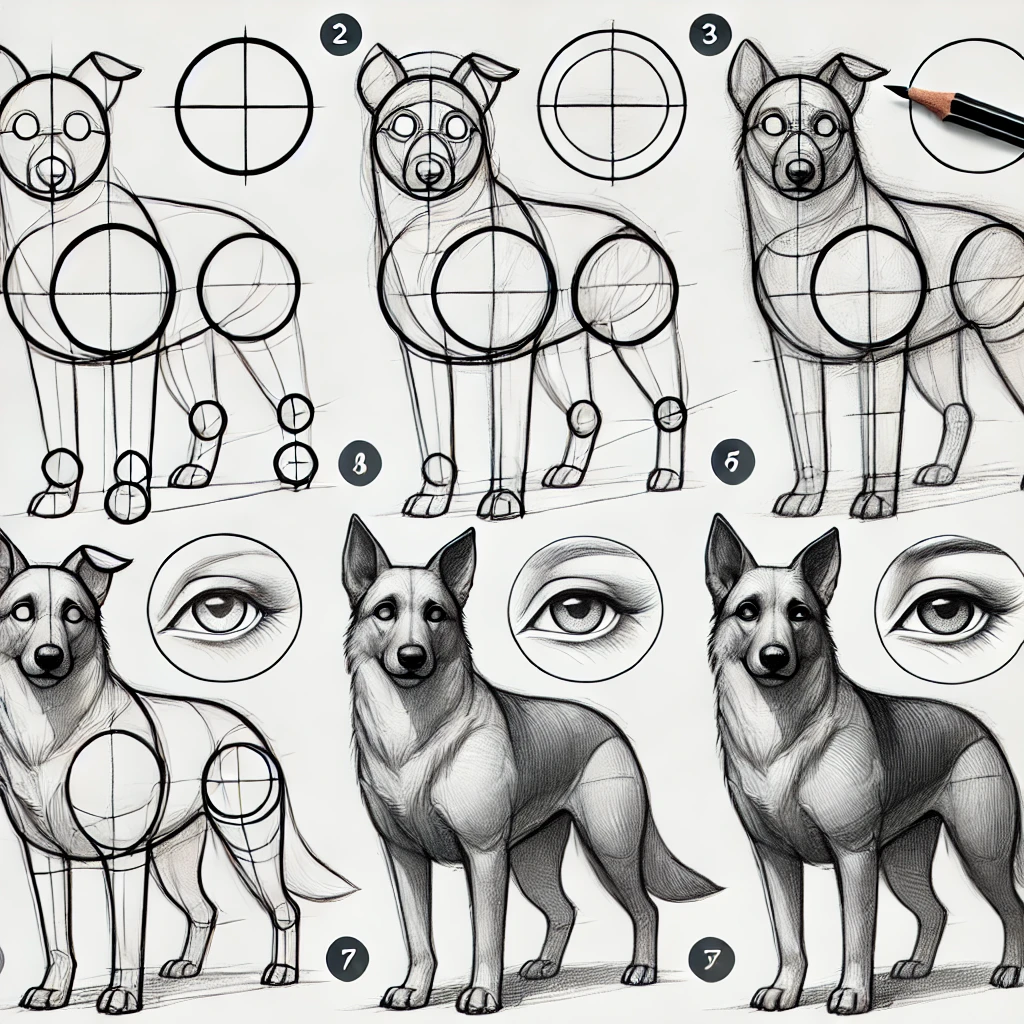
Step-by-Step Guide 🐶✏️
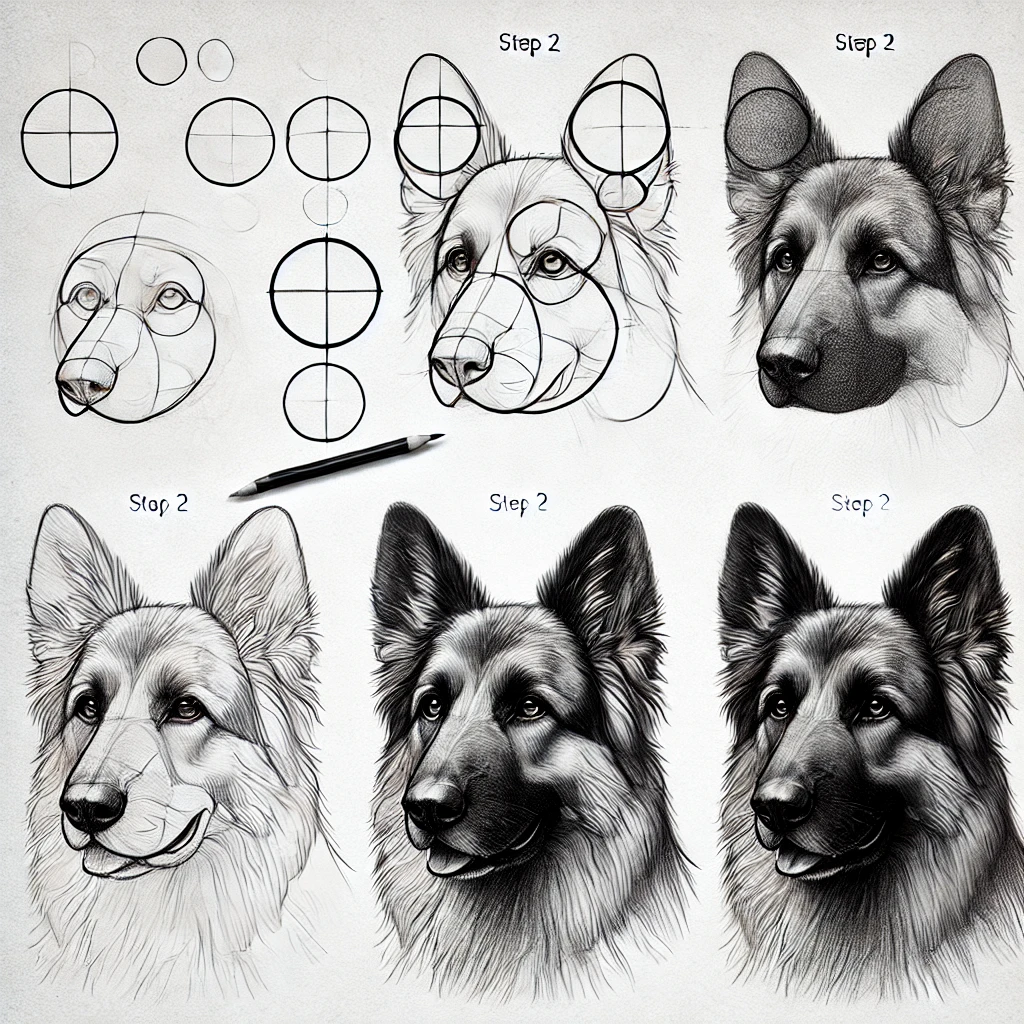

How to Draw a Dog : Latest Drawing a dog is an exciting creative journey. This guide takes inspiration from Wacom’s structured method but adds more artistic depth and realism! You’ll learn to sketch, refine, and create a masterpiece with text + drawing integration. 🎨
For more information regarding 4 seasonal cxcercieses of all dog breeds recommended by the doctors and experts,you can visit our youtube channel:
🖌️ Step 1: Sketching the Basic Framework
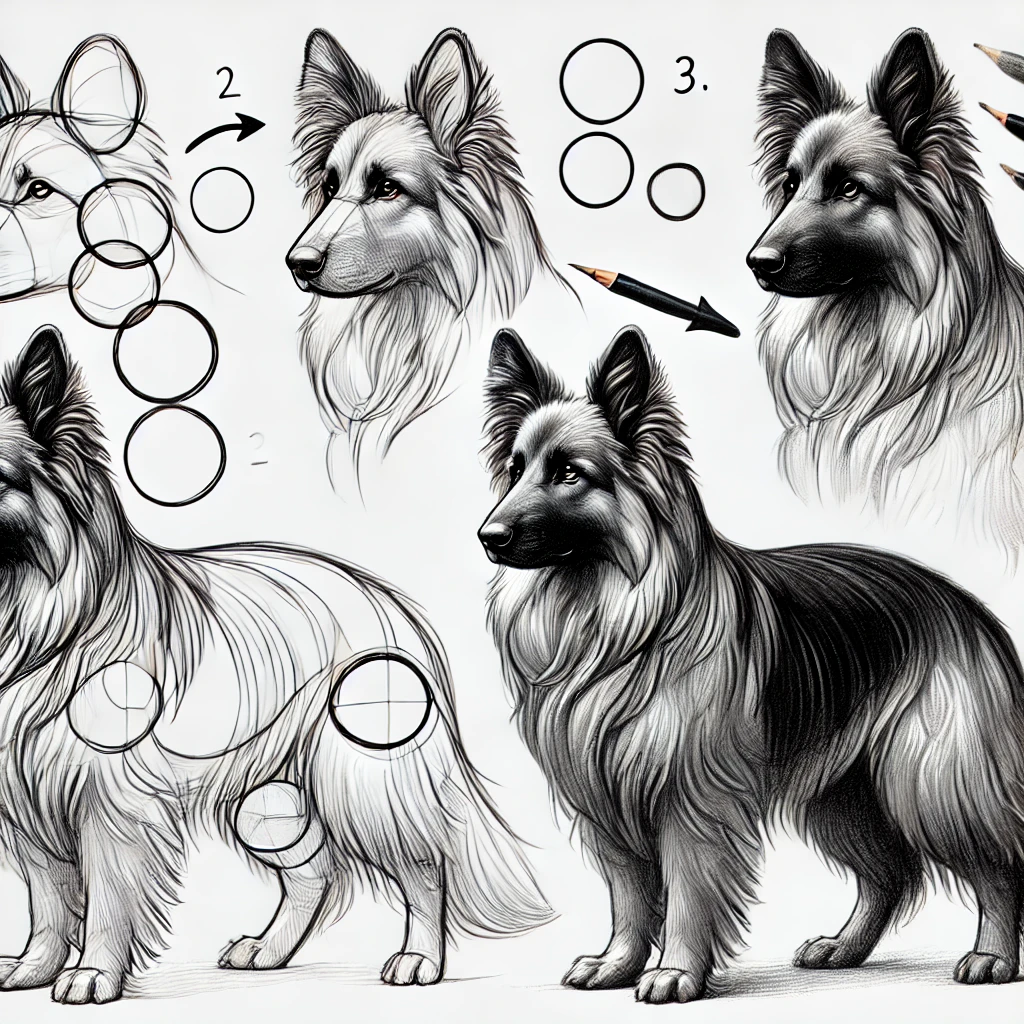
Start with simple geometric shapes to form the structure of the dog:
🟢 Head: Draw a circle for the head. 🟢 Body: Add an oval for the chest and another for the hindquarters. 🟢 Guidelines: Lightly sketch a vertical and horizontal cross in the head circle to map out facial features. 🟢 Legs & Tail: Use cylinder shapes for legs and a curved line for the tail.
➡️ This step is crucial as it lays the foundation! ✏️
✍️ Step 2: Refining the Silhouette
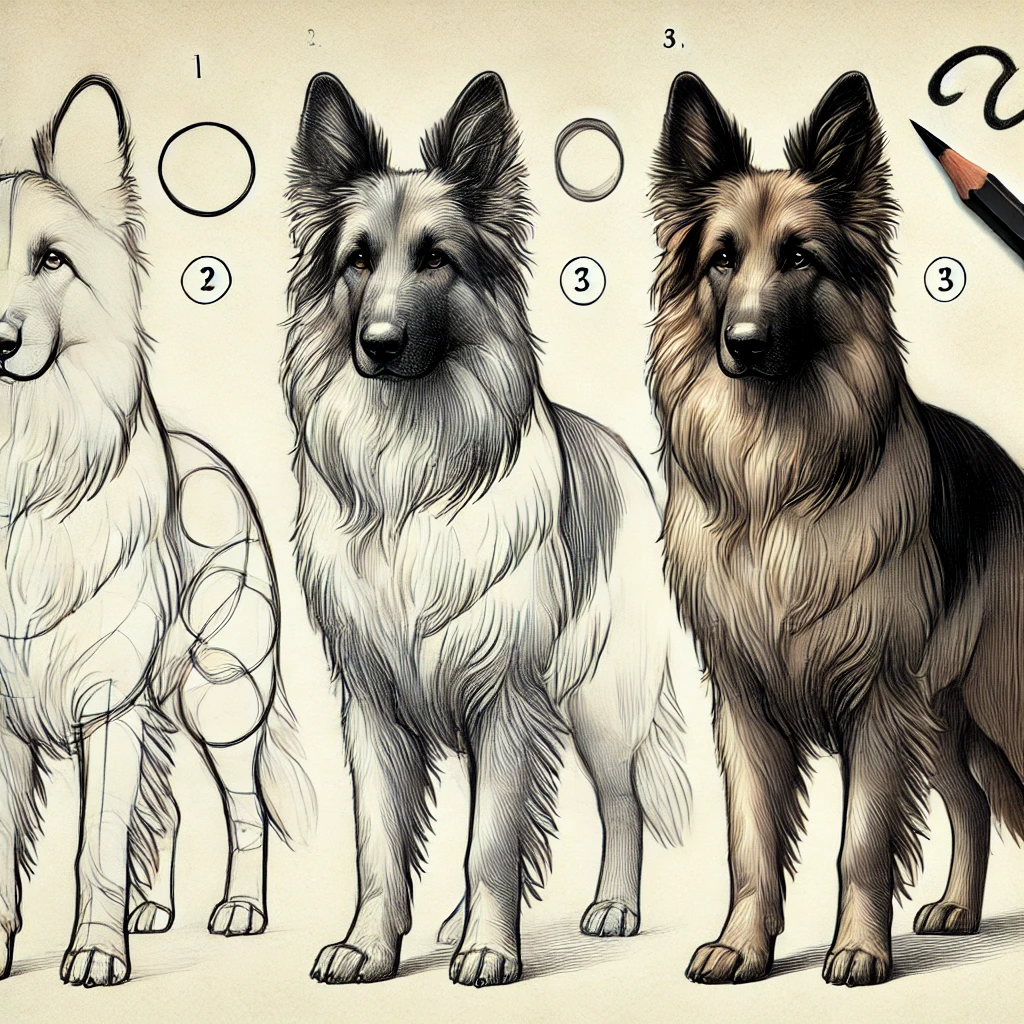
Now, let’s transform those basic shapes into a dog’s actual form:
- Outline the snout and jawline by extending the head circle forward.
- Define the ears (floppy or pointed, depending on the breed).
- Refine the body curves to connect the chest and hind area smoothly.
- Sketch the paws with rounded shapes at the bottom of the legs.
🔍 Tip: Use light strokes so you can erase mistakes easily! 🖊️
👀 Step 3: Facial Features & Details
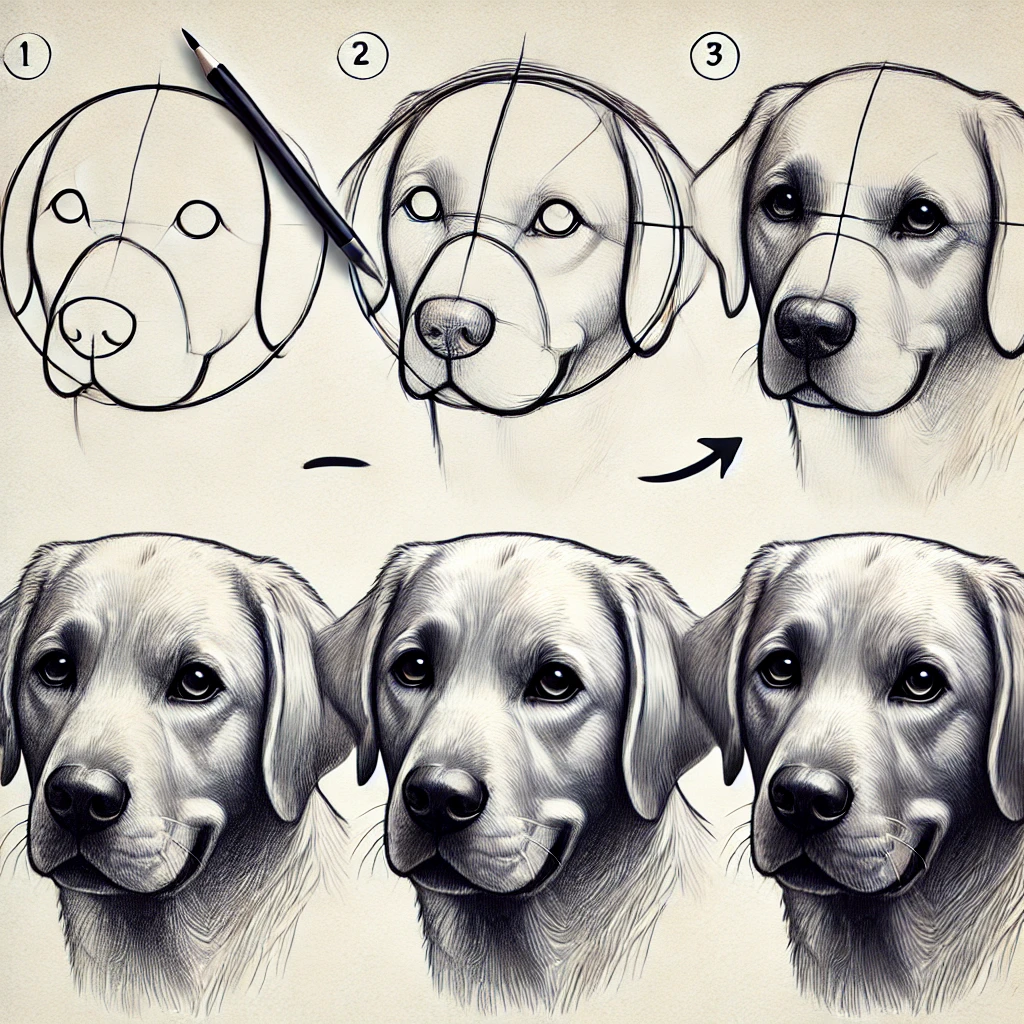
Time to give your dog some personality! 🐕
🎯 Eyes: Draw almond-shaped eyes with small pupils and highlights for realism. 🎯 Nose: Add a small rounded shape with tiny nostrils. 🎯 Mouth: A simple curved line for a gentle smile or open mouth for a playful look. 🎯 Ears: Shape them according to breed—floppy, upright, or rounded.
🔹 Dogs’ expressions are key to making the drawing lively! 🖌️
🖊️ Step 4: Adding Fur Texture & Depth
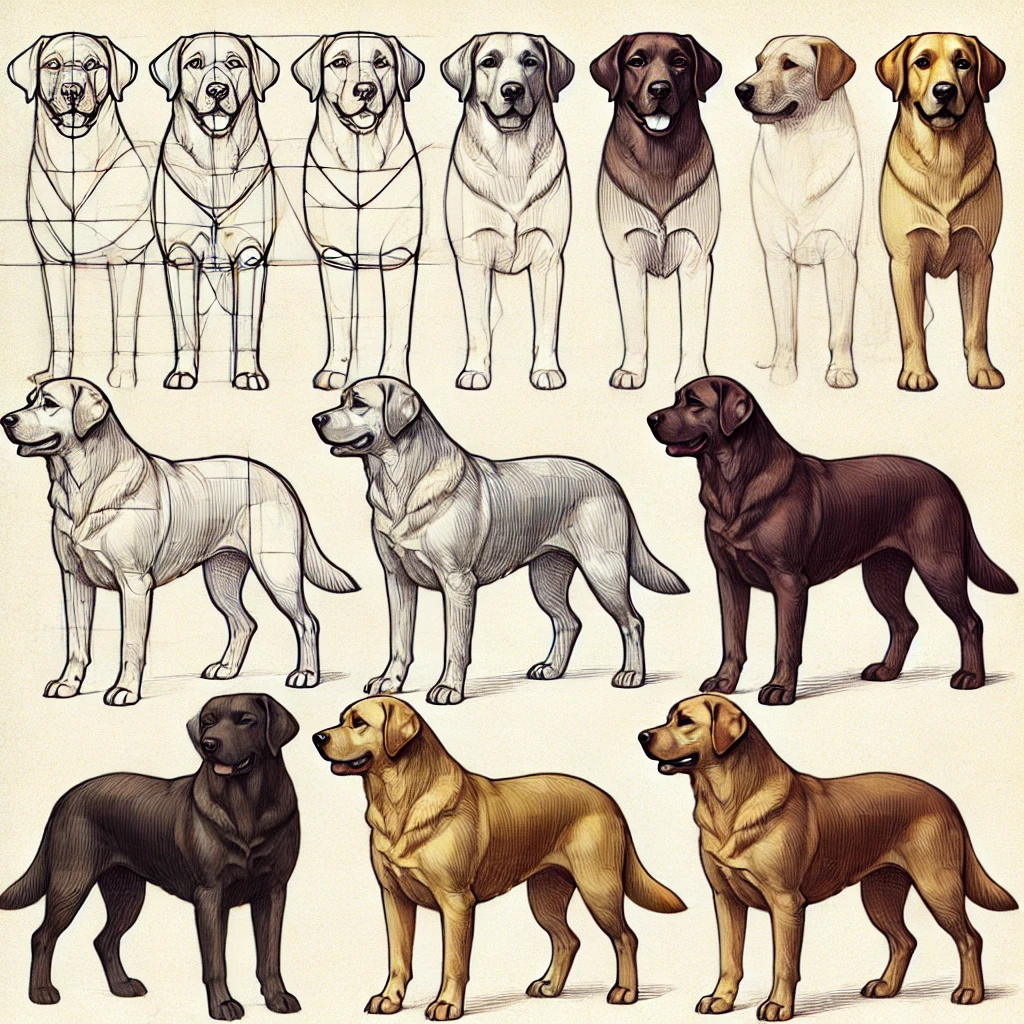
1️⃣ Short Hair: Use short, delicate pencil strokes to create soft fur. 2️⃣ Long Hair: Layer strokes in flowing motions to simulate fluffy textures. 3️⃣ Shading: Darken areas under the ears, neck, and legs to add depth. 4️⃣ Contrast: Erase some areas slightly to create highlights.
✏️ Use a blending stump for smooth shading! 🖍️
🎨 Step 5: Realistic Dog Drawing Section
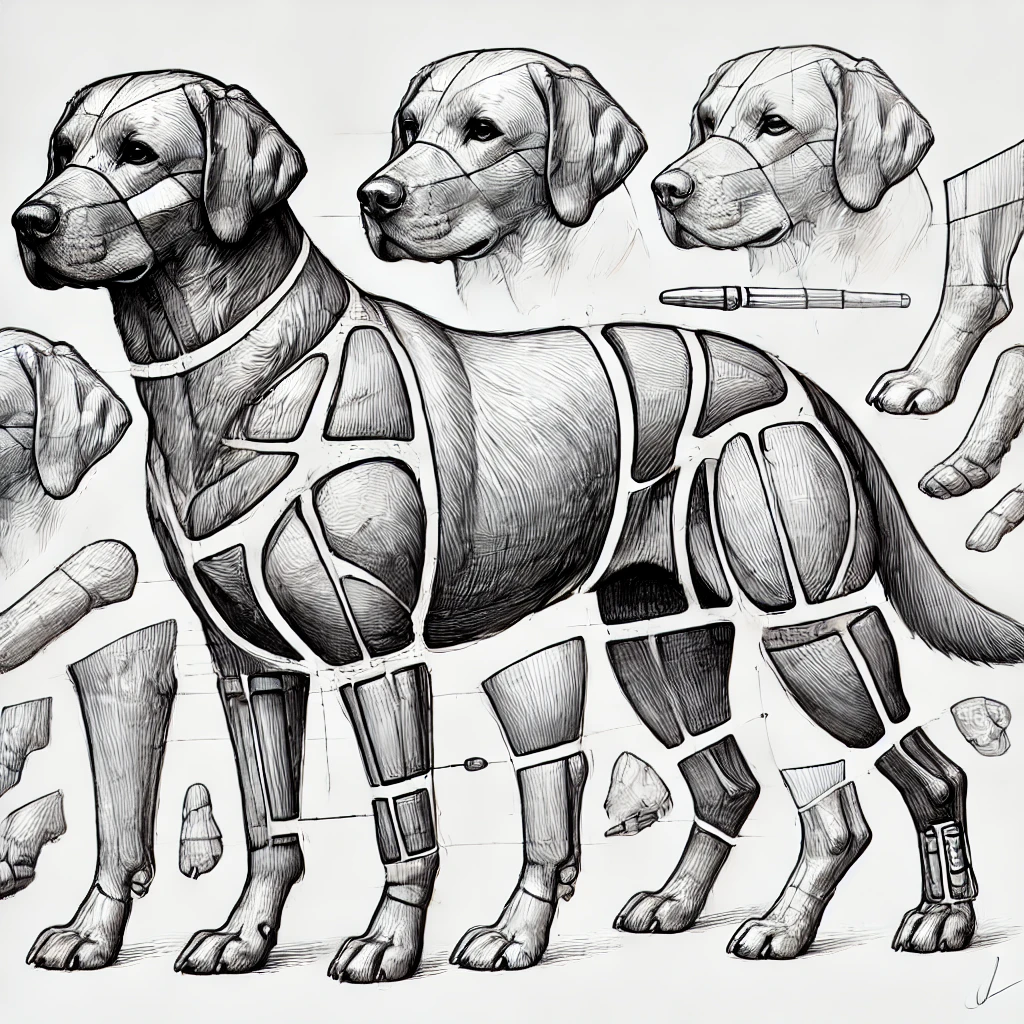
If you want a hyper-realistic result, here’s what to do:
✅ Fine Details: Focus on small elements like fur strands, whiskers, and paw pads. ✅ Layered Shading: Use cross-hatching and smudging techniques to create rich textures. ✅ Reflective Eyes: Add bright highlights for glossy, soulful eyes. ✅ Final Touches: Use an eraser to highlight fur sections and enhance realism.
🐕🦺 This is what makes your drawing stand out from a simple sketch! ✨
🖍️ Step 6: Optional Inking & Coloring

- Outline your final sketch with a fine liner for clarity.
- Use colored pencils or markers for a vibrant touch.
- Blend colors gradually for a soft, natural effect.
🎭 This step enhances your drawing’s depth and visual impact!
🌟 Closing Statement
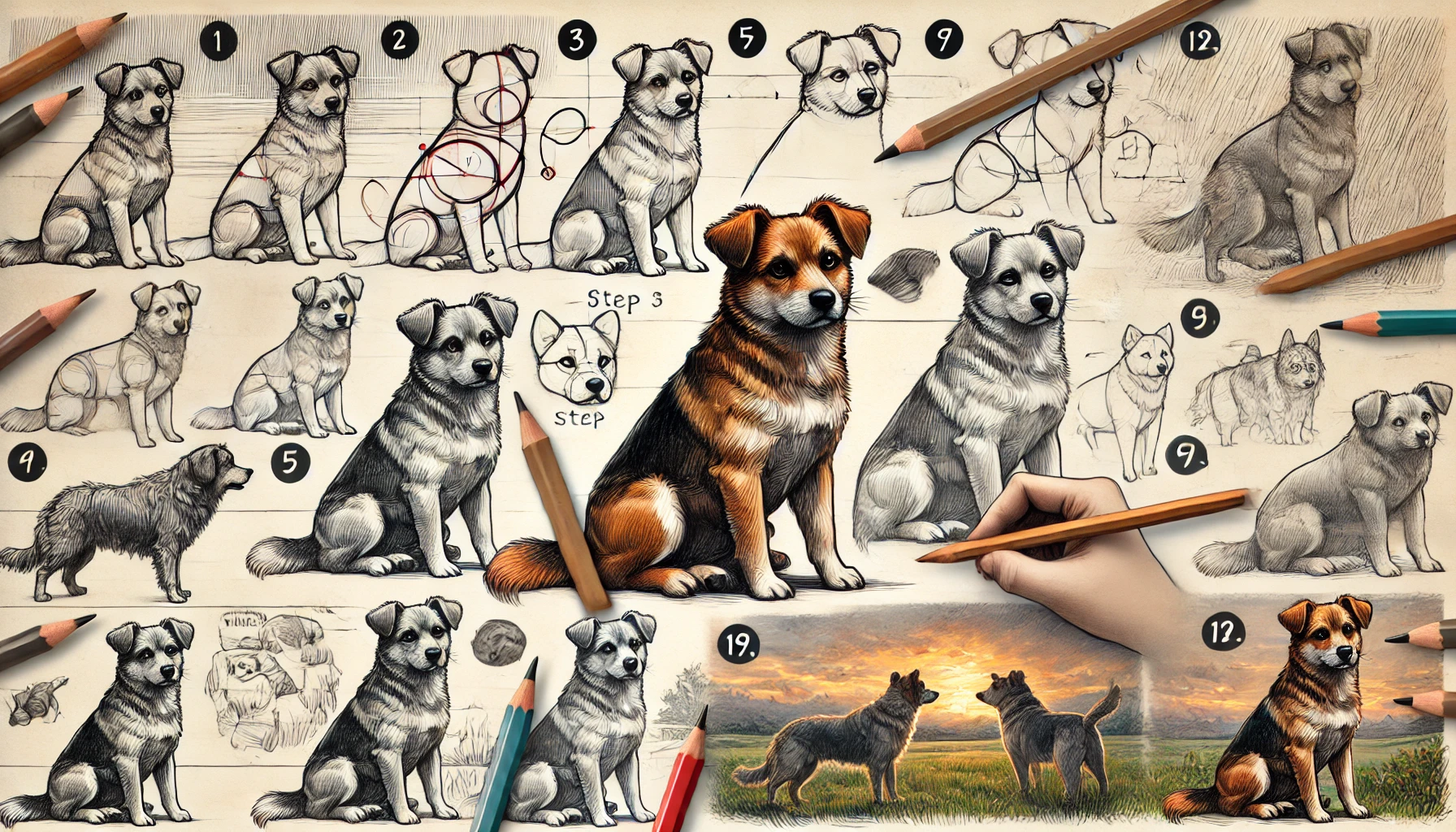
Now you’ve created a stunning dog drawing—combining structured sketching with detailed realism! Whether you prefer cartoon–style, semi–realistic, or ultra-realistic art, this guide ensures an amazing result.
📌 Practice different dog breeds to master various textures and features!
🐶 Happy Drawing! 🖊️🎨
🧐 FAQs (Frequently Asked Questions)
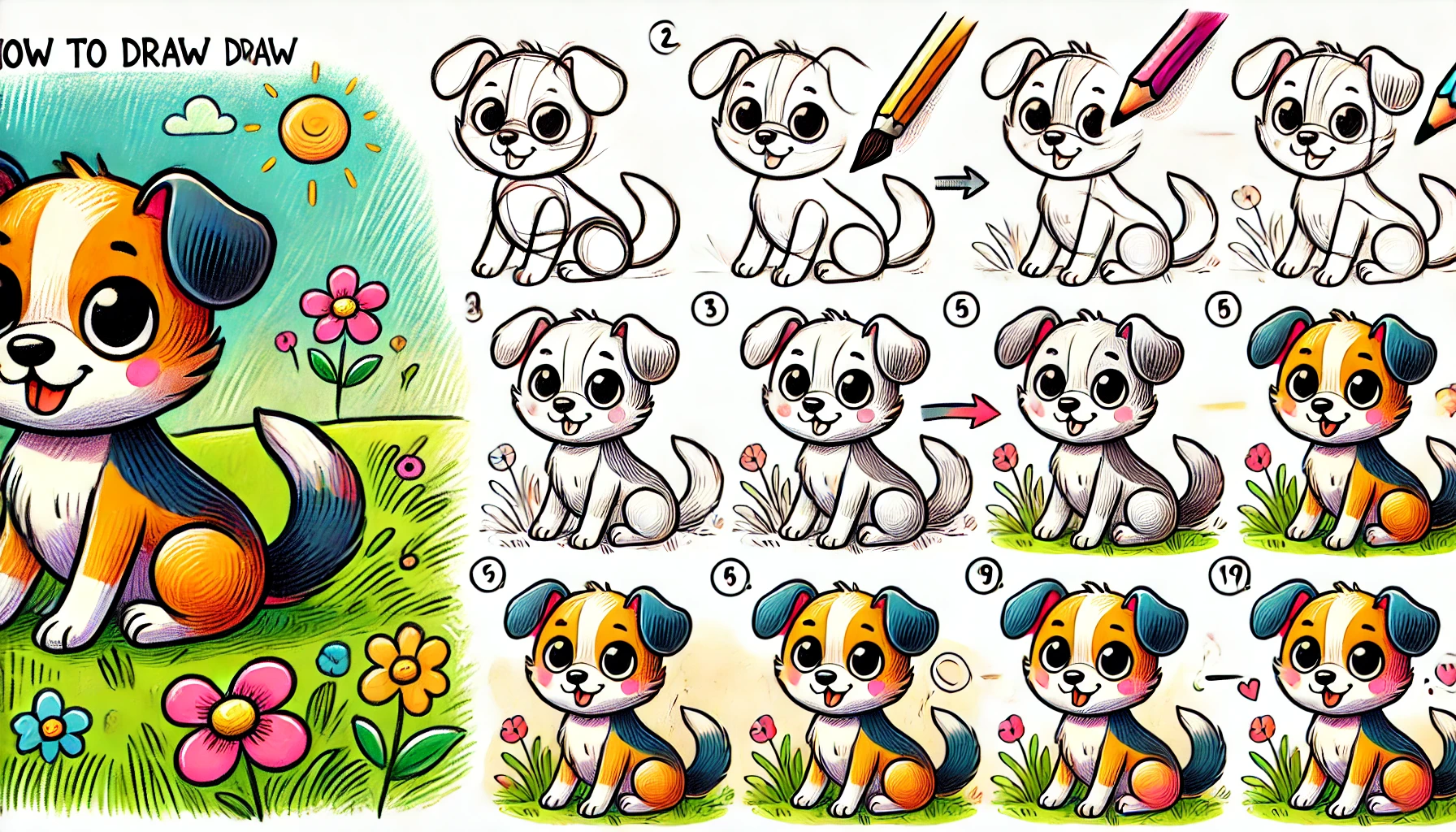
1. What are the best tools for dog drawing?
For beginners, pencils (HB, 2B, and 4B), erasers, fine liners, and blending stumps are great choices. Digital artists can use Wacom tablets, Procreate, or Photoshop.
2. How can I improve my dog drawing skills?
Practice regularly by drawing different breeds, studying real-life dog photos, and experimenting with fur textures, shading, and expressions.
3. Which dog breeds are easiest to draw?
Labradors, Beagles, and Golden Retrievers have simple shapes and fur patterns, making them great for beginners.
4. How do I make my drawing look realistic?
Use layered shading, detailed fur strokes, and highlights in the eyes and nose to achieve a lifelike effect.
5. Can I use reference images?
Absolutely! Reference images help capture proportions, expressions, and unique breed features accurately.
6. What’s the difference between sketching and inking?
Sketching is the rough outline of your drawing, while inking adds definition and clarity by outlining the final shapes.
7. Should I draw digitally or on paper?
Both are great! Paper drawing improves hand coordination, while digital drawing allows easy corrections and advanced effects.
8. How can I add motion to my dog drawing?
Capture movement by sketching dynamic poses, flowing fur, and slight paw lifts to create action.
9. What’s the best way to shade fur?
Use light, directional strokes and blend with a soft brush or tissue to create a realistic fur texture.
10. Where can I find inspiration for dog drawings?
Look at real dogs, photographs, art tutorials, and animated films for ideas and styles! 🐶✨
-

 SMALL DOG BREEDS4 months ago
SMALL DOG BREEDS4 months agoMerle Chihuahua: A Comprehensive Guide
-

 Large Breeds4 months ago
Large Breeds4 months agoSamoyeds Hypoallergenic: Closer Look at the Breed
-

 SMALL DOG BREEDS4 months ago
SMALL DOG BREEDS4 months agoMerle Pomeranian: A Adorable Companion
-

 Large Breeds4 months ago
Large Breeds4 months agoStandard Poodle Weight: Country Wise
-
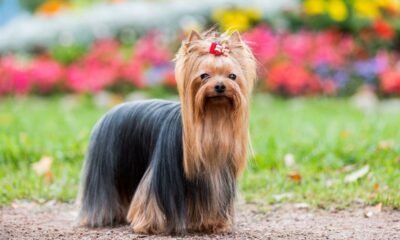
 SMALL DOG BREEDS4 months ago
SMALL DOG BREEDS4 months agoYorkshire Terrier: a Big Personality
-

 MEDIUM BREEDS4 months ago
MEDIUM BREEDS4 months agoAmerican Water Spaniel Colors Chocolate In Crcols:
-

 Terrier Breeds3 months ago
Terrier Breeds3 months agoDog Breeds: by Country & Category
-
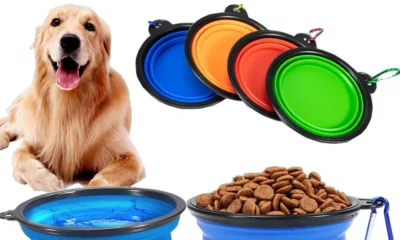
 Experts Nutritions3 months ago
Experts Nutritions3 months agoBest Dog Food: Large Breeds
















